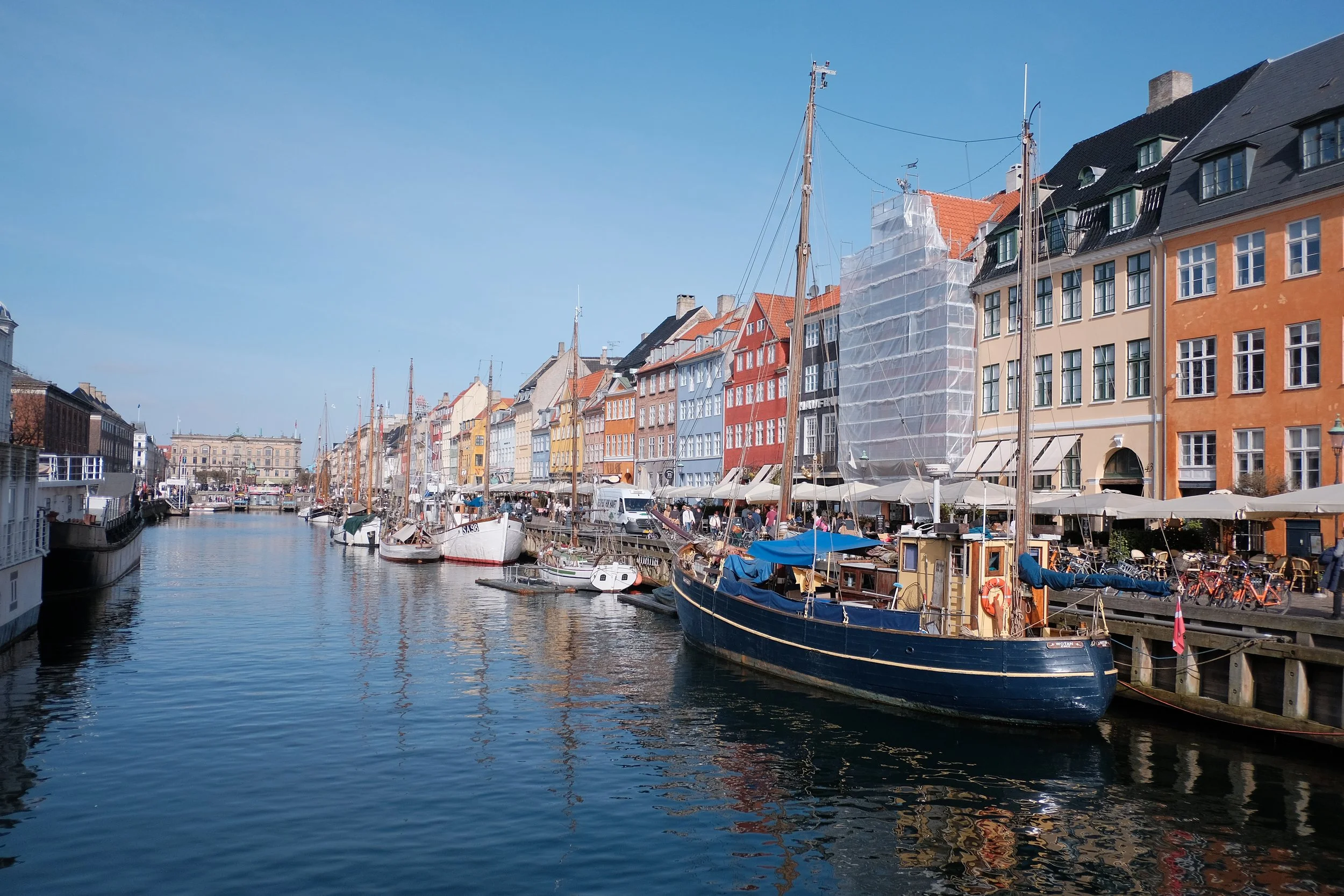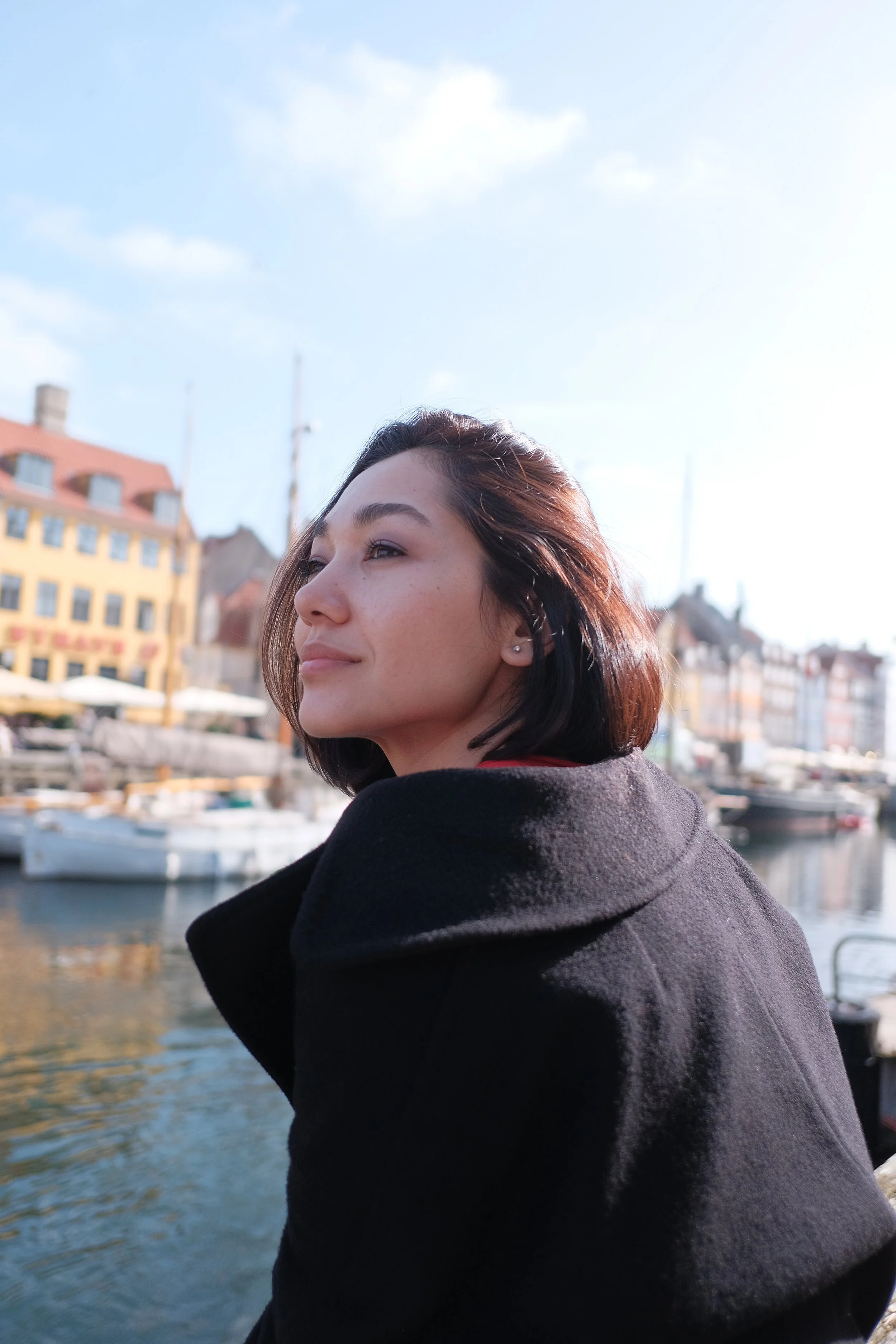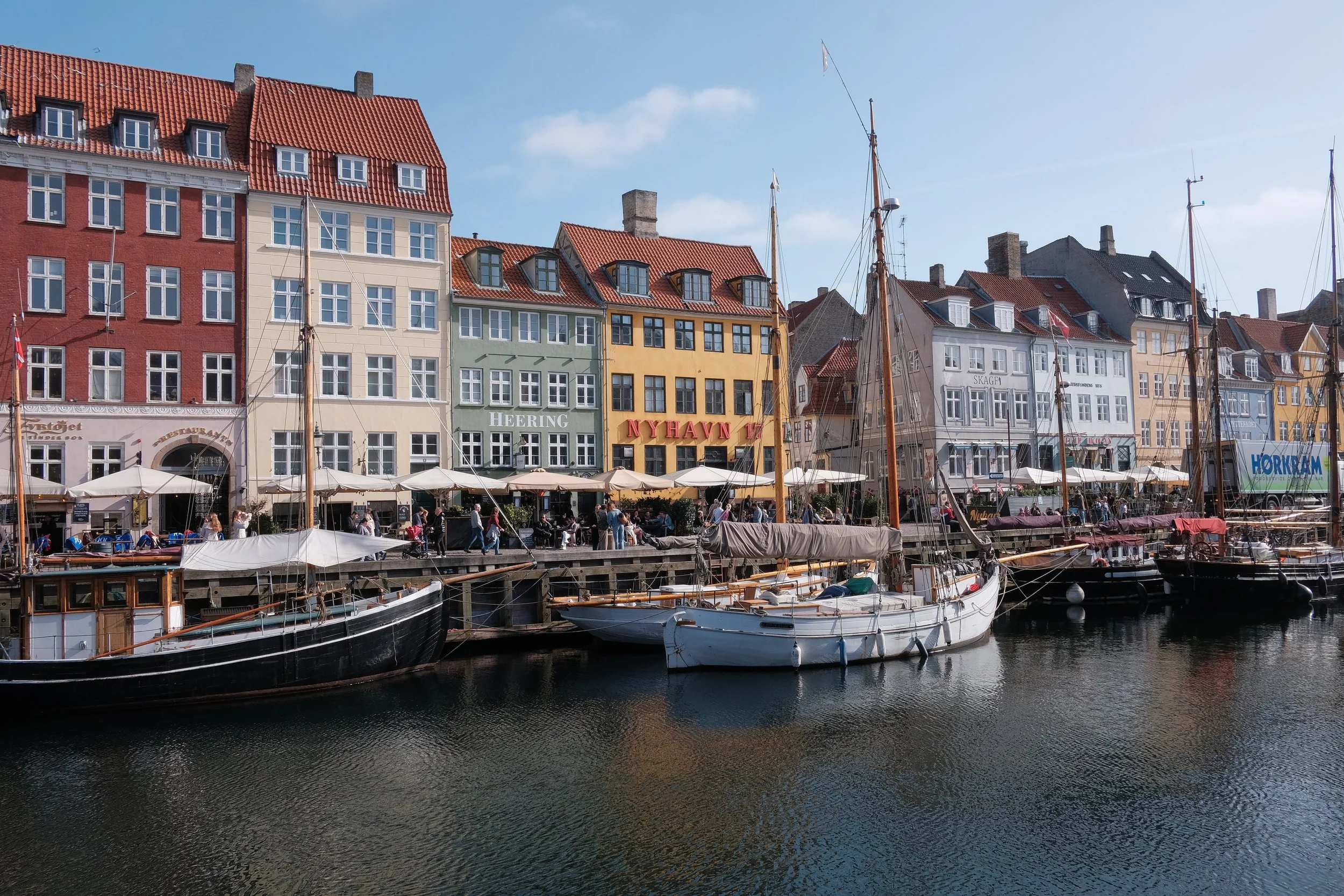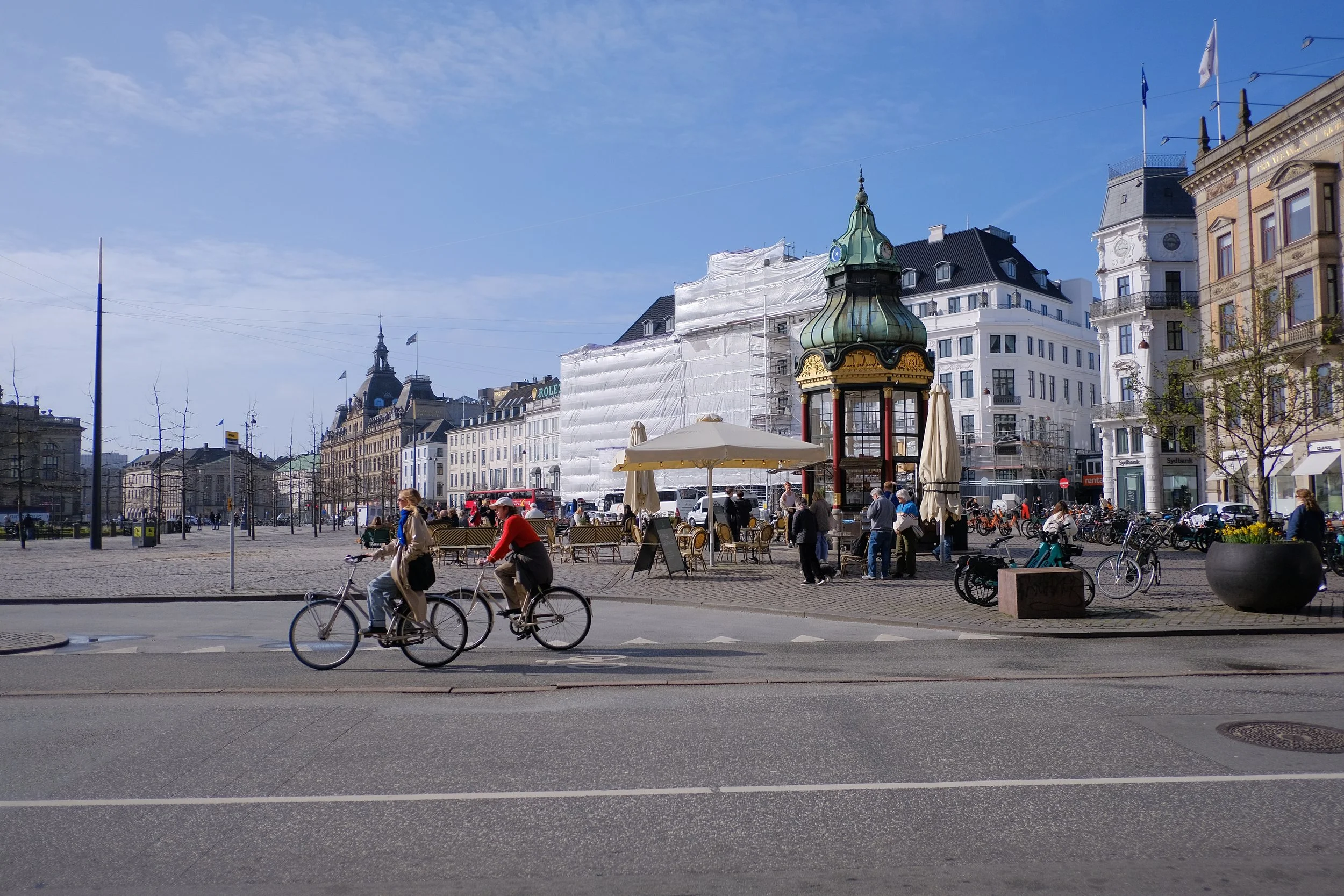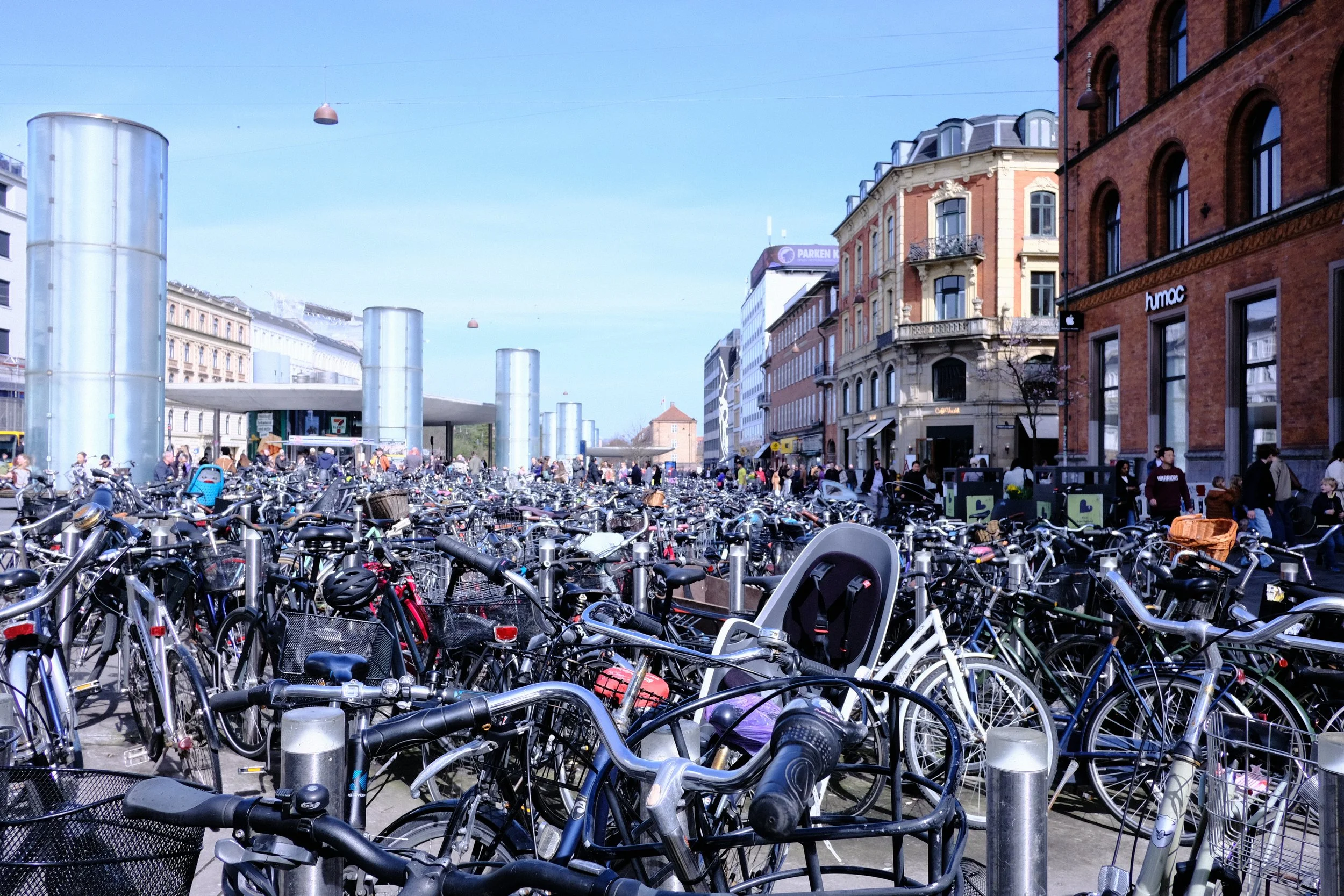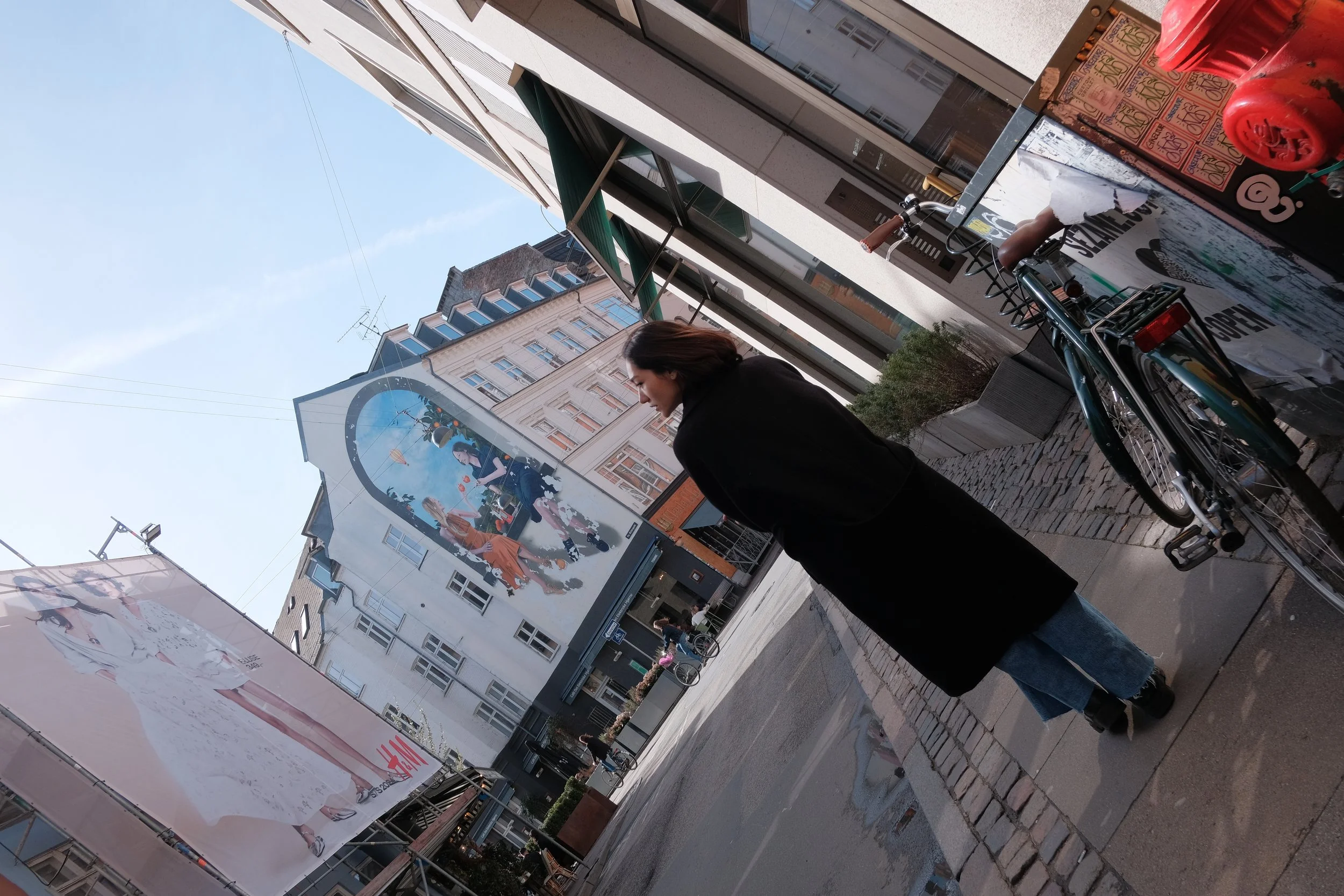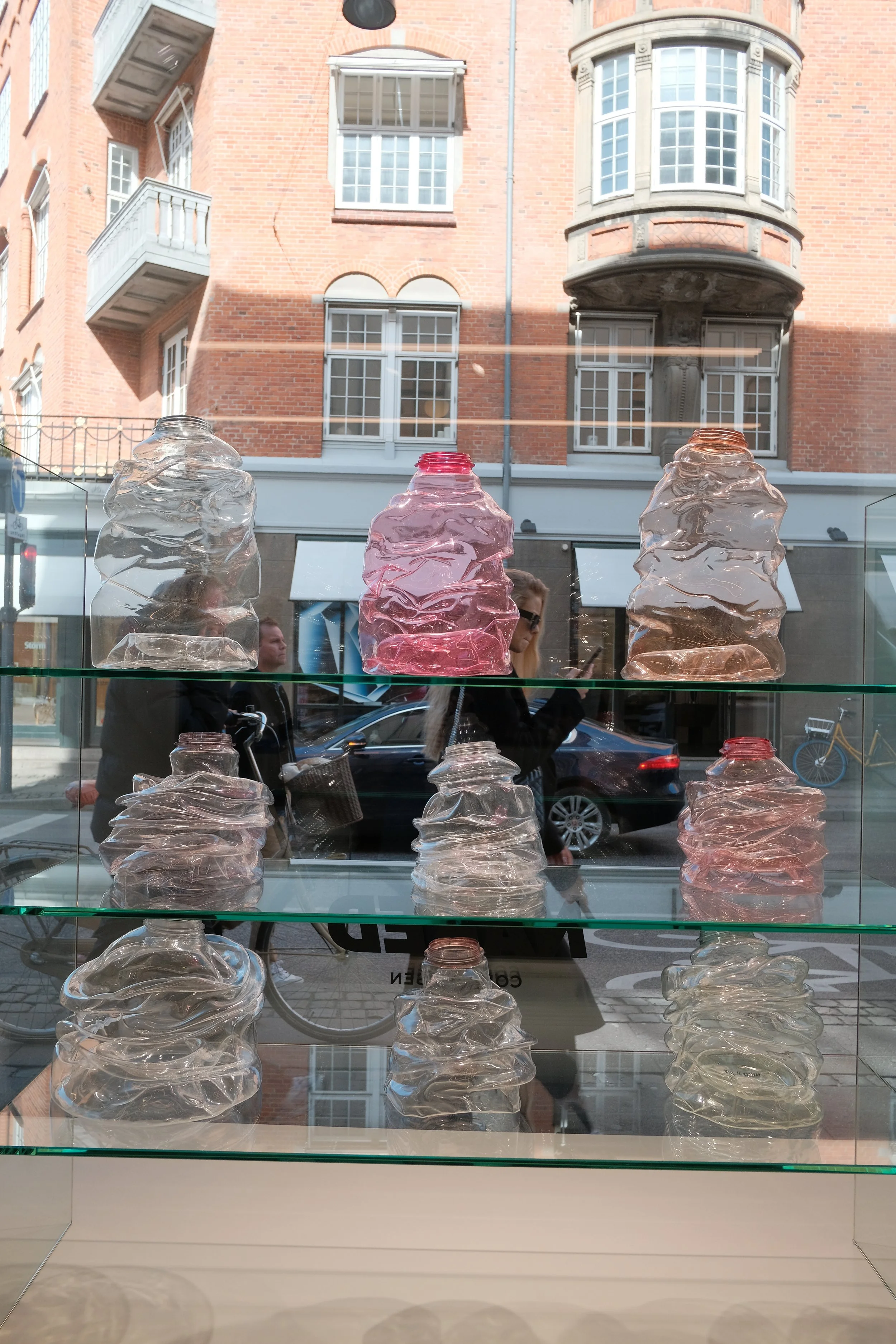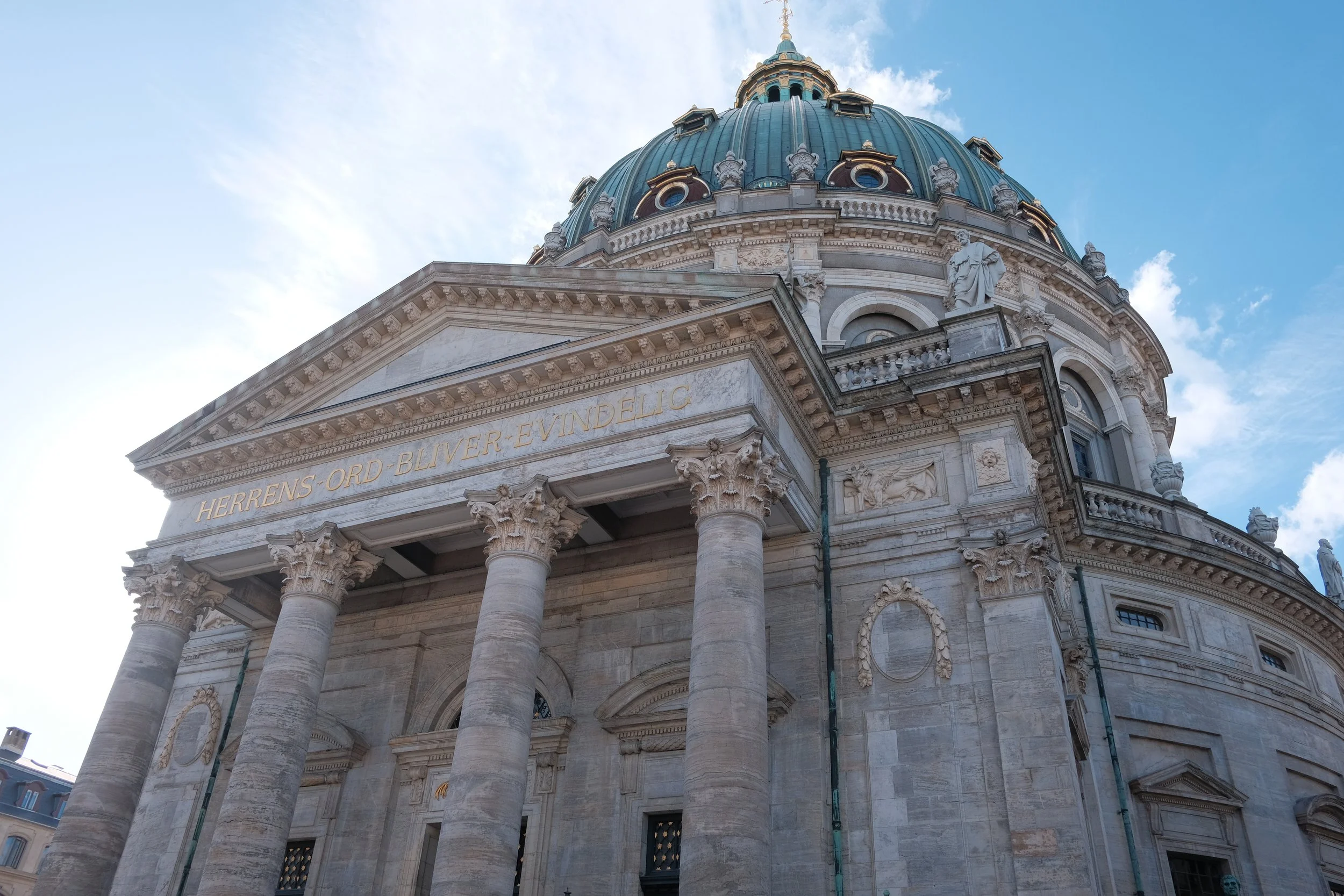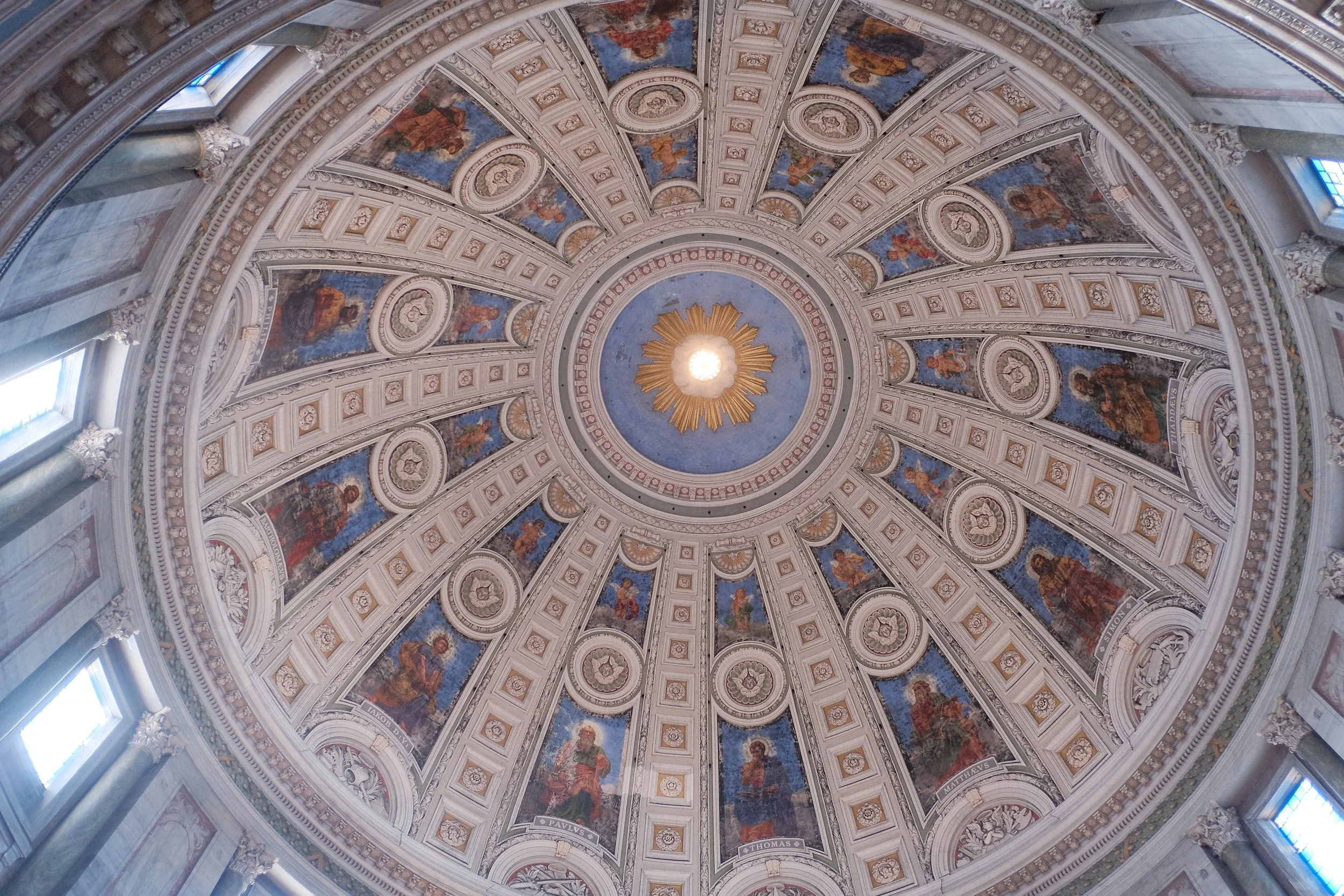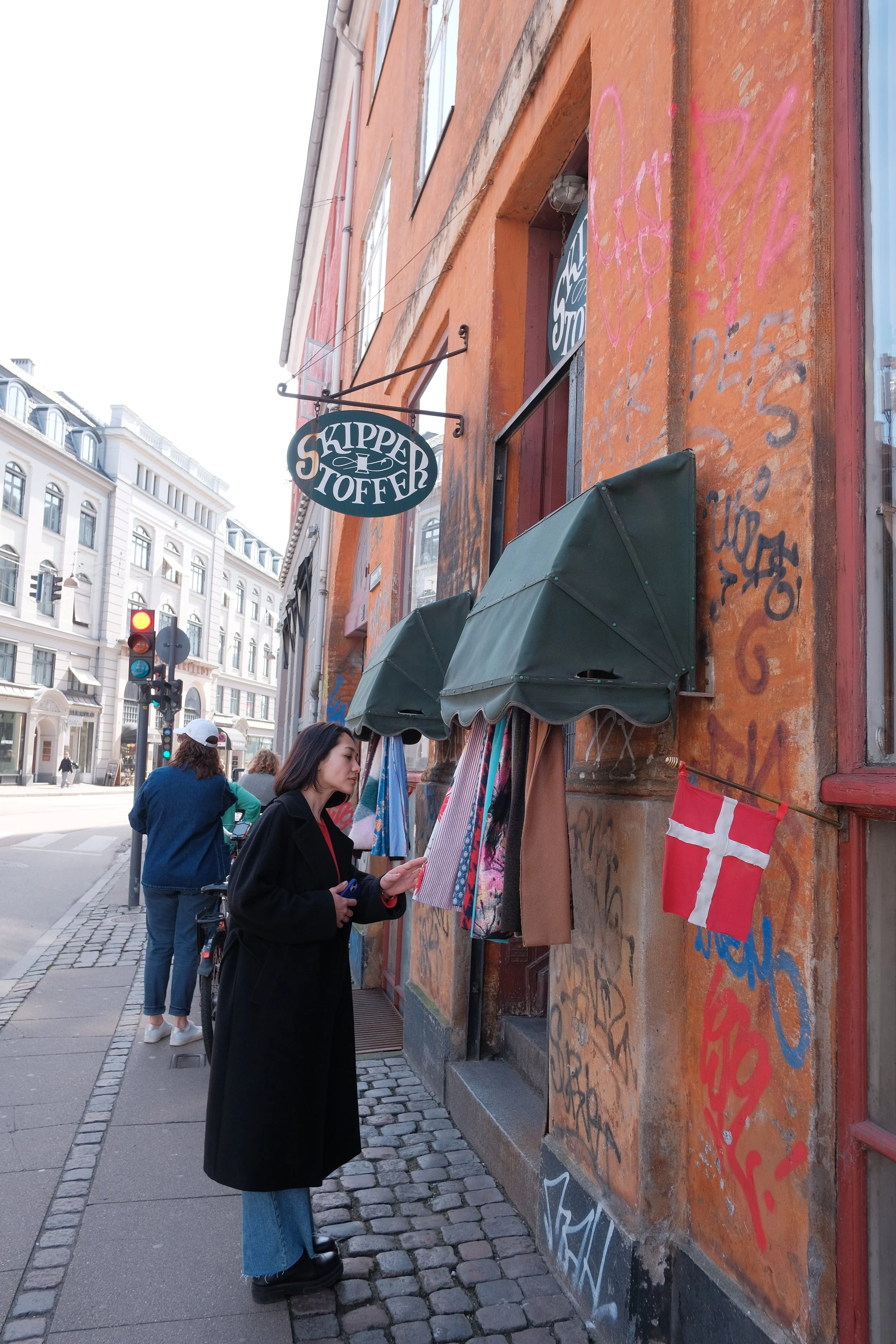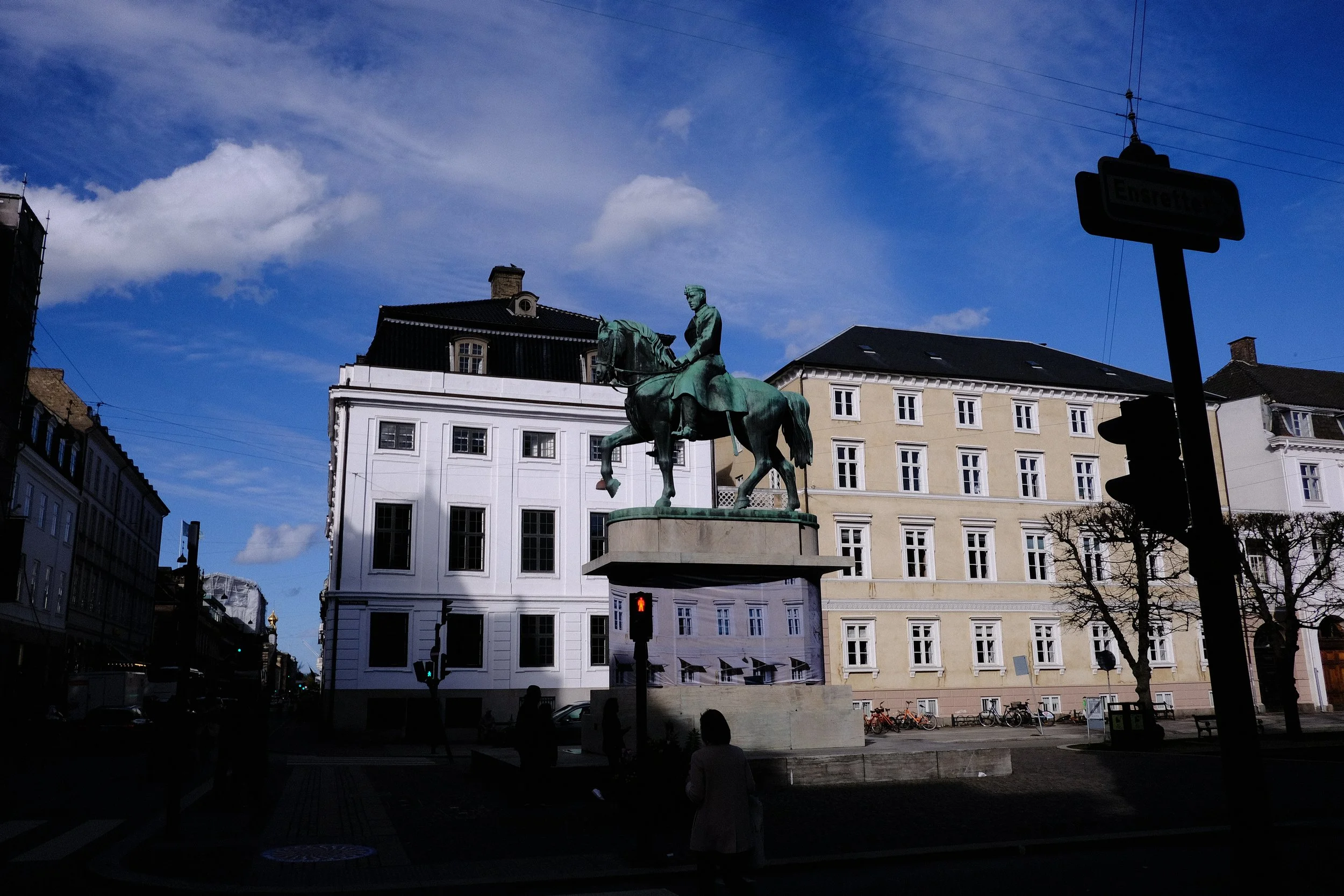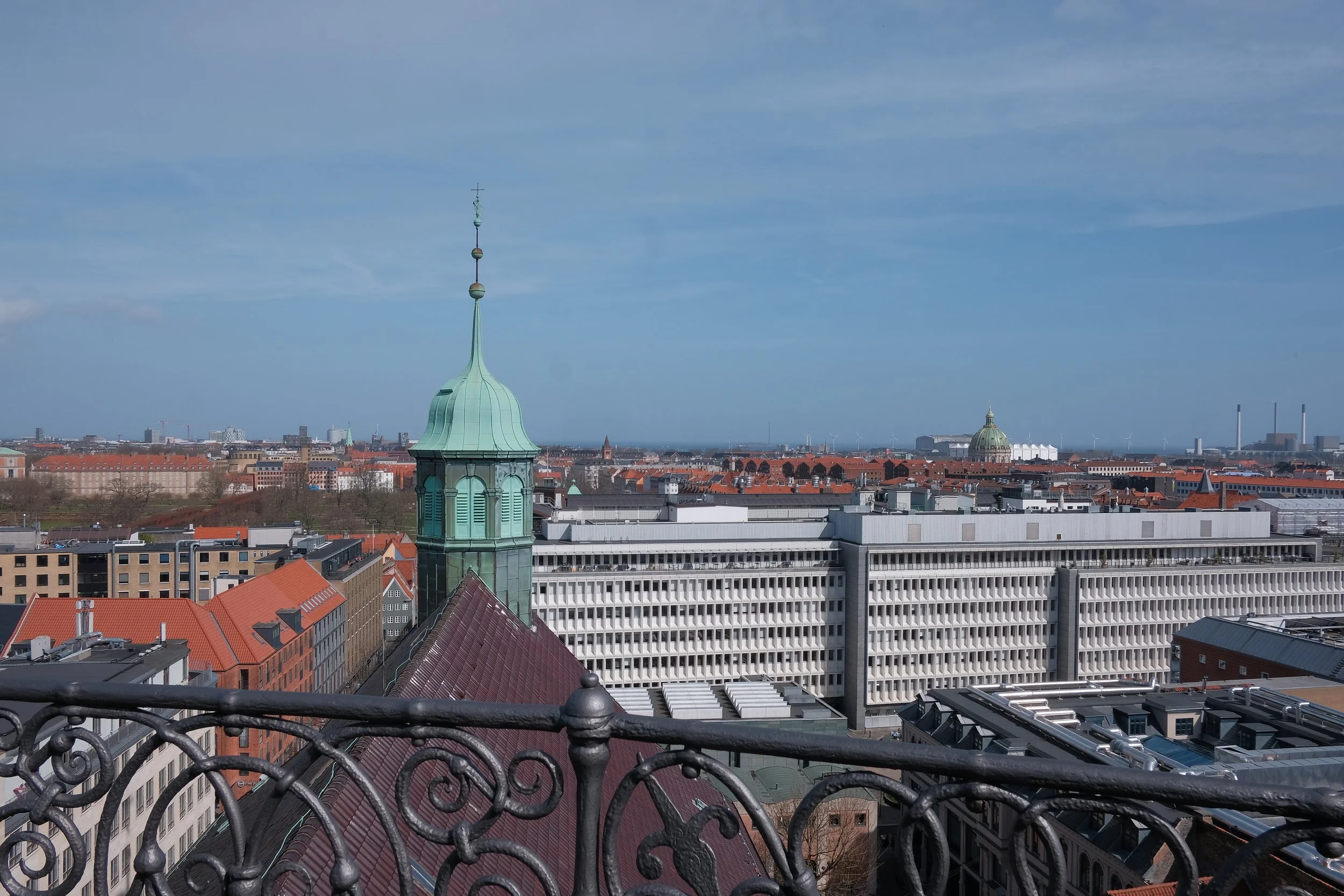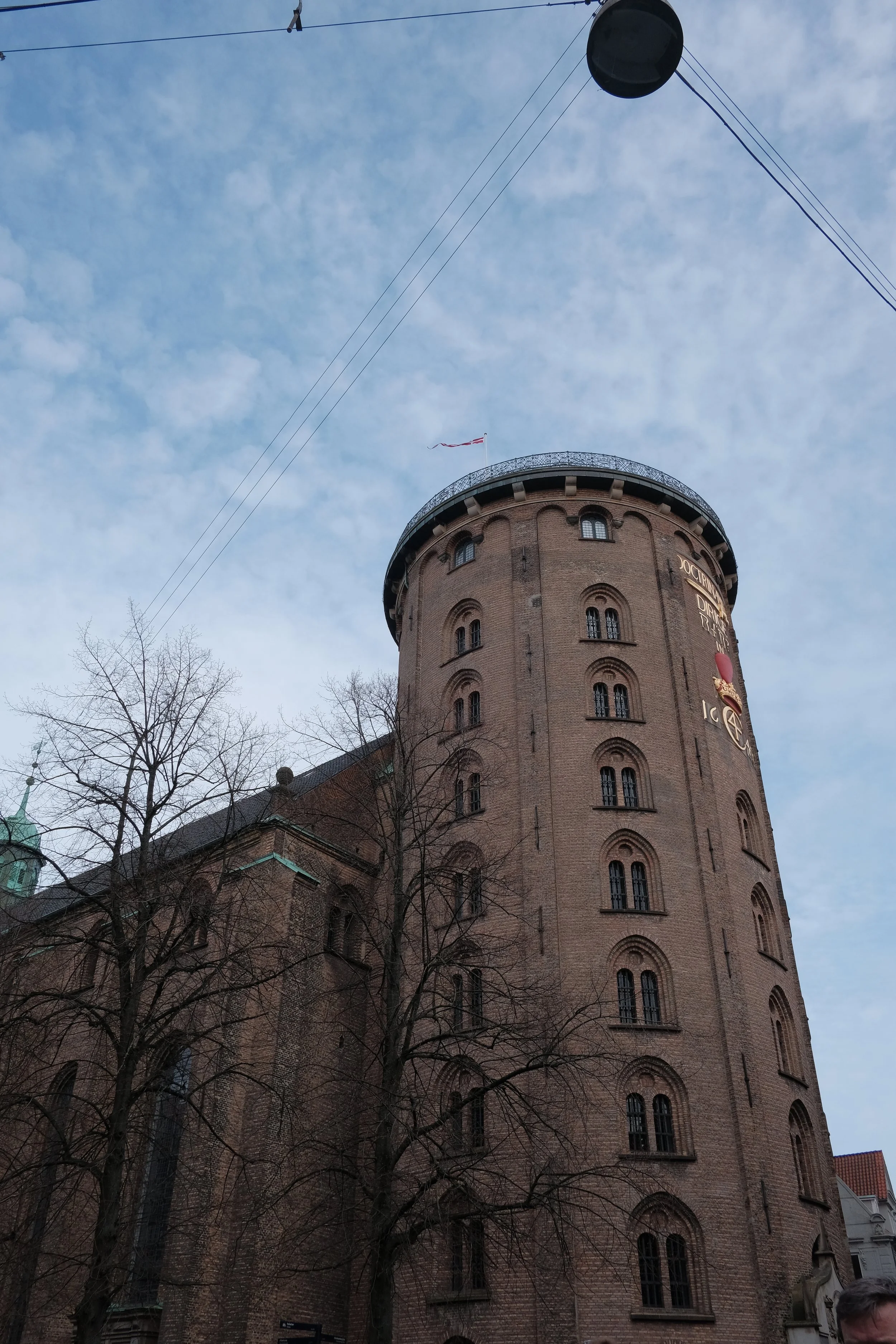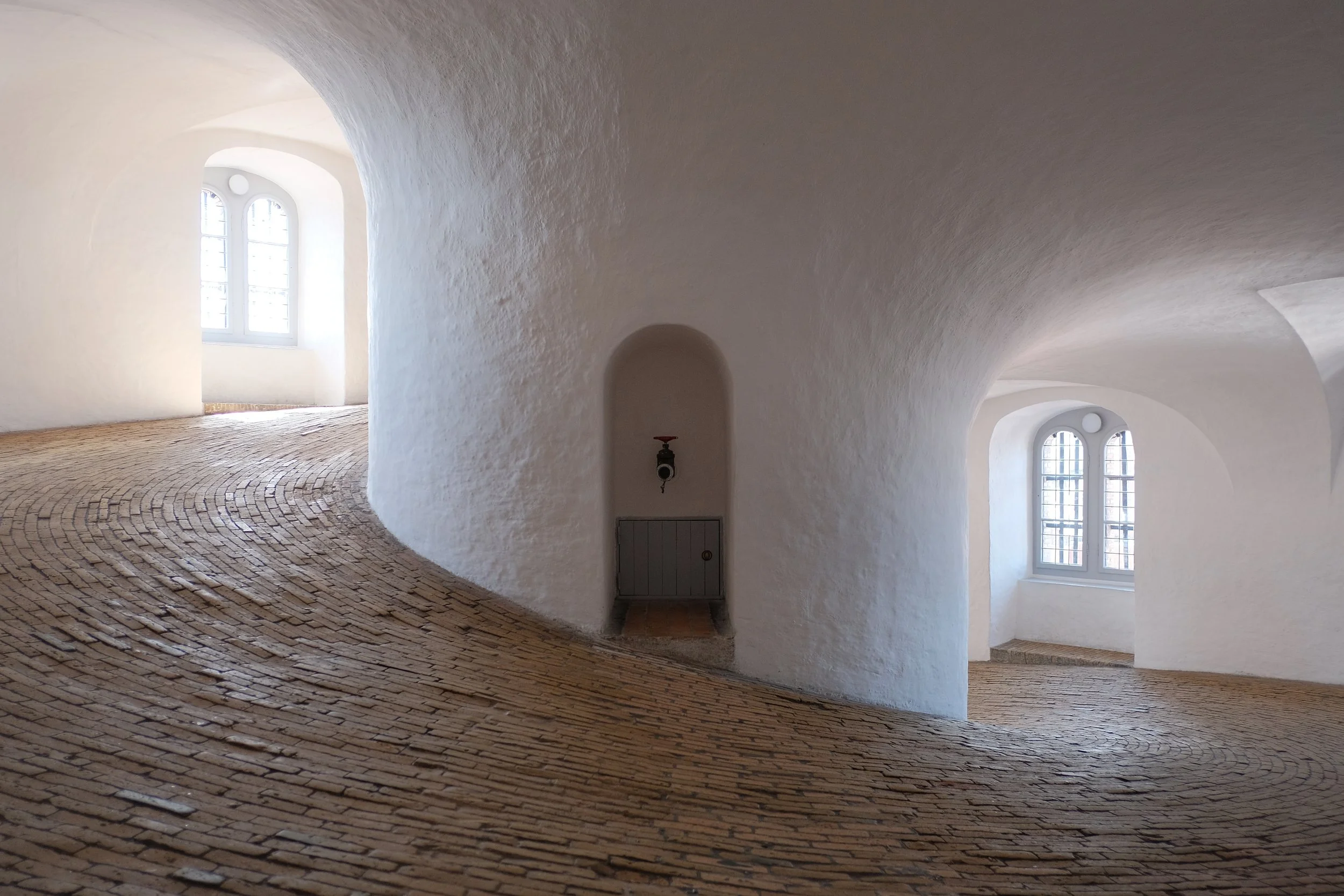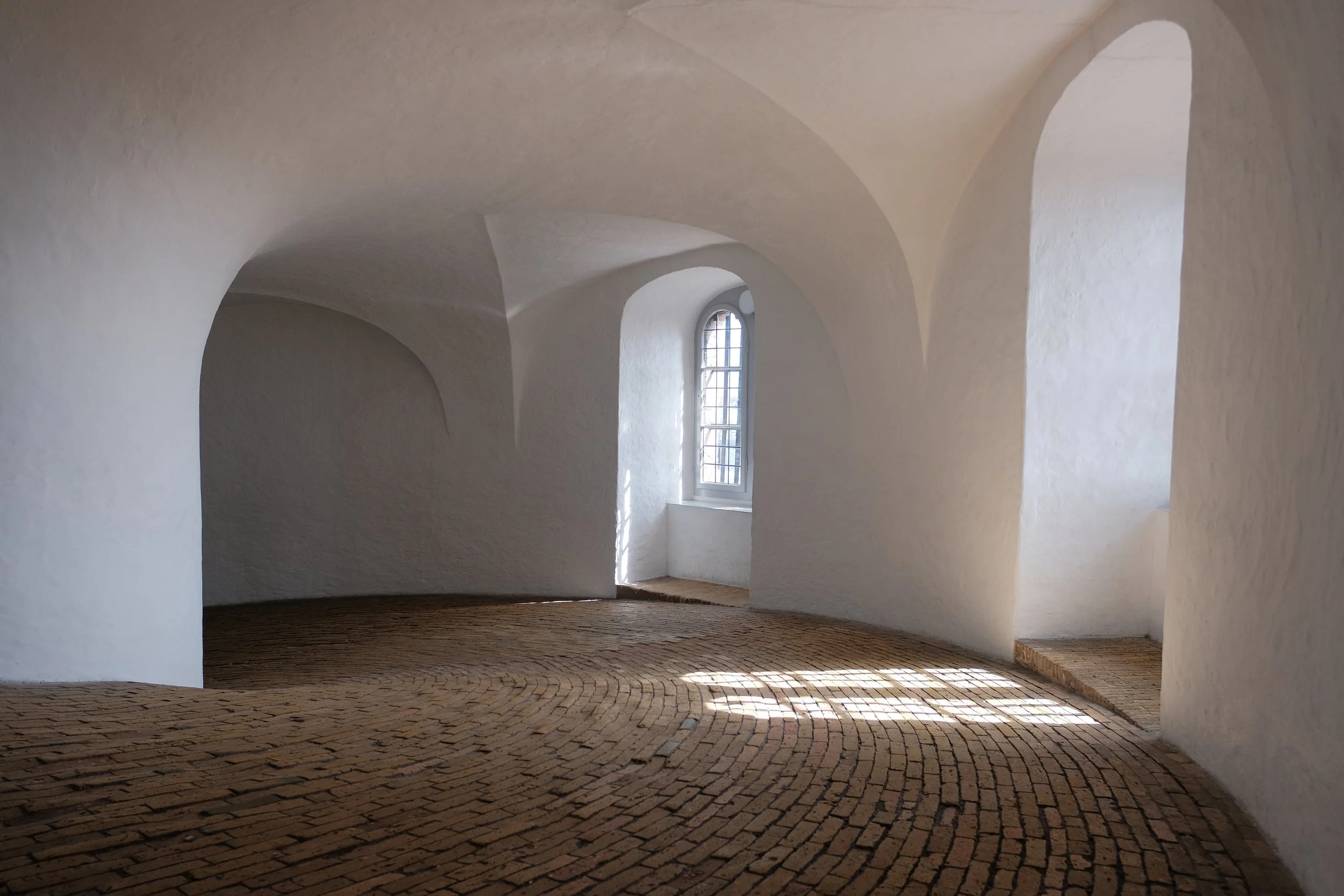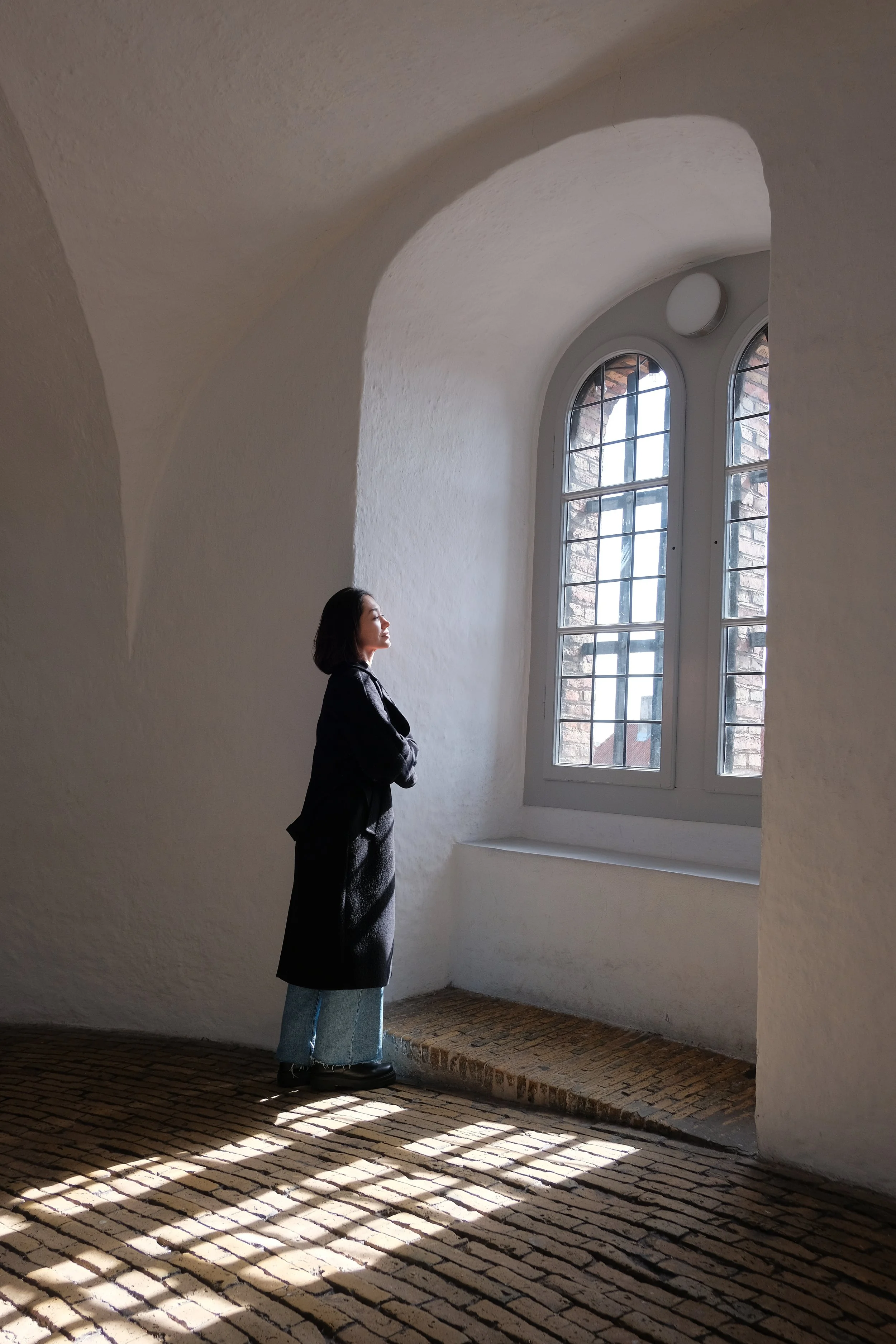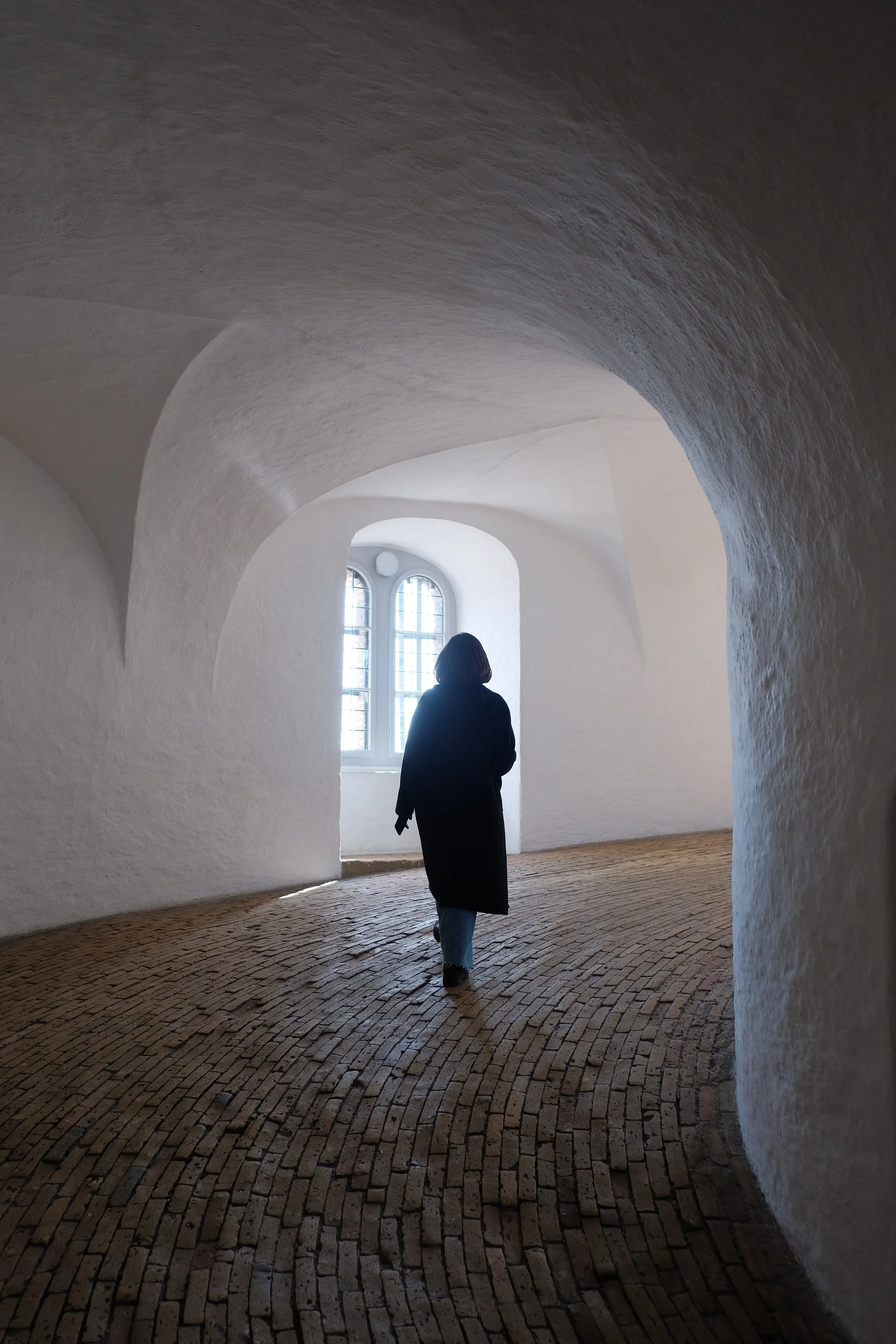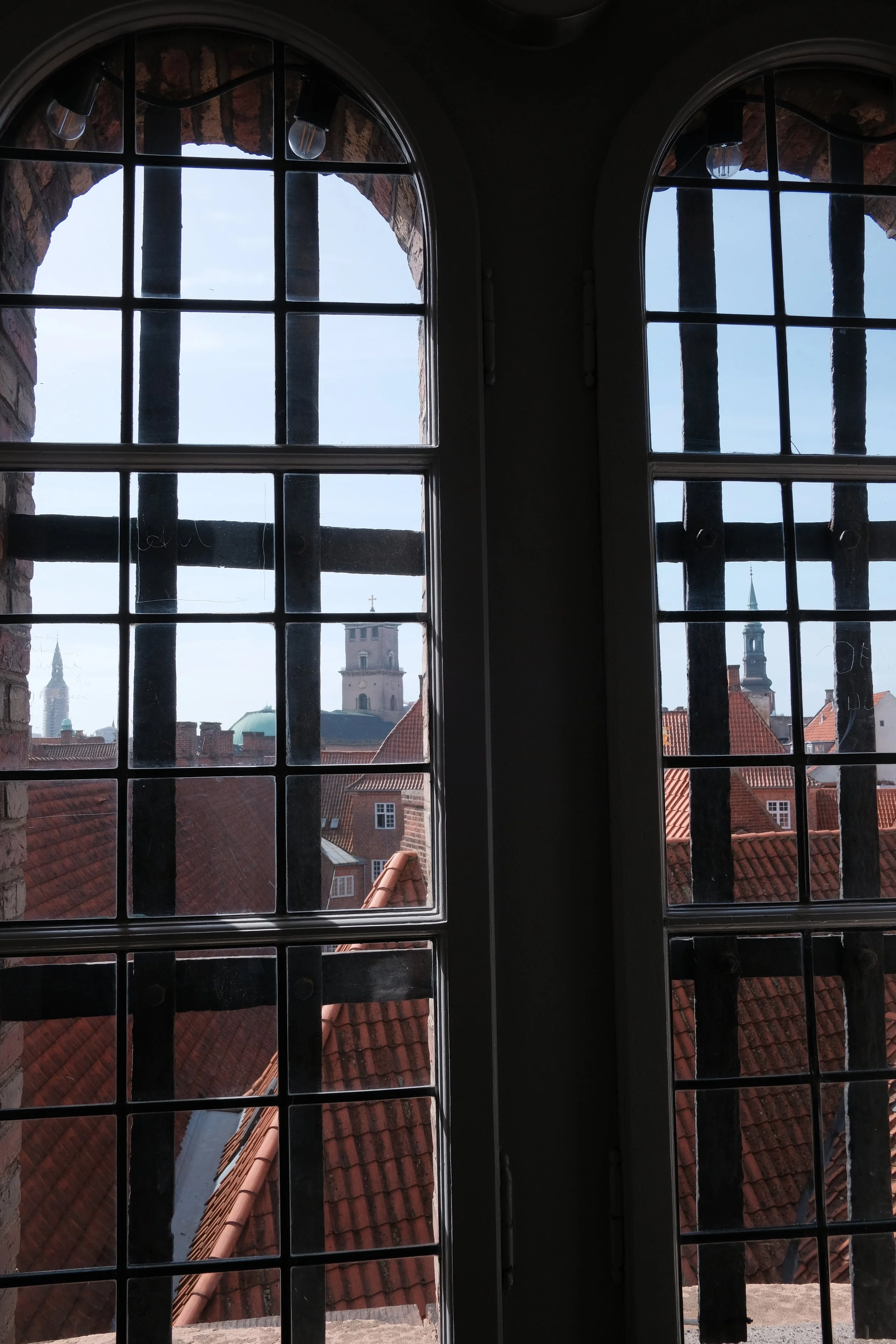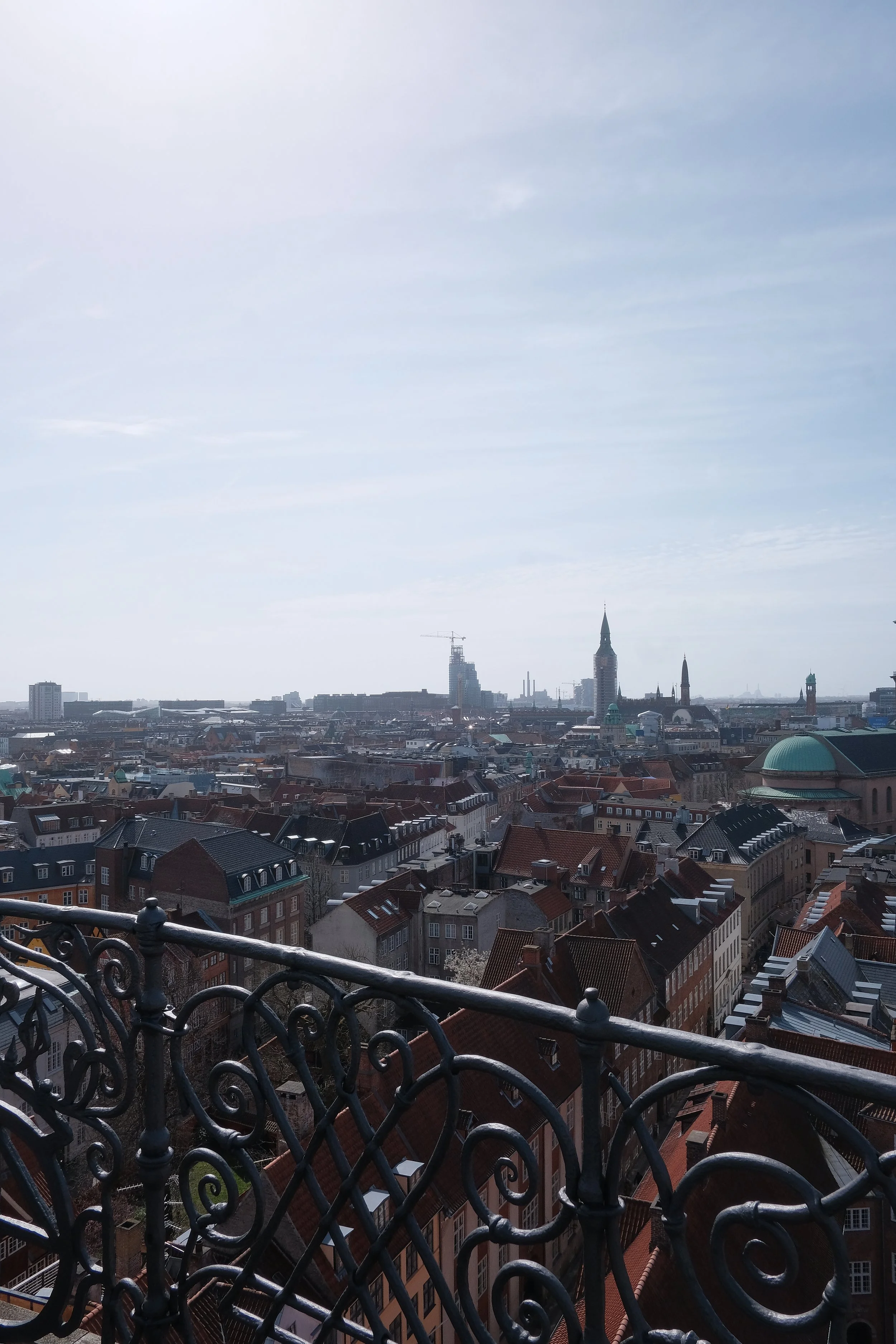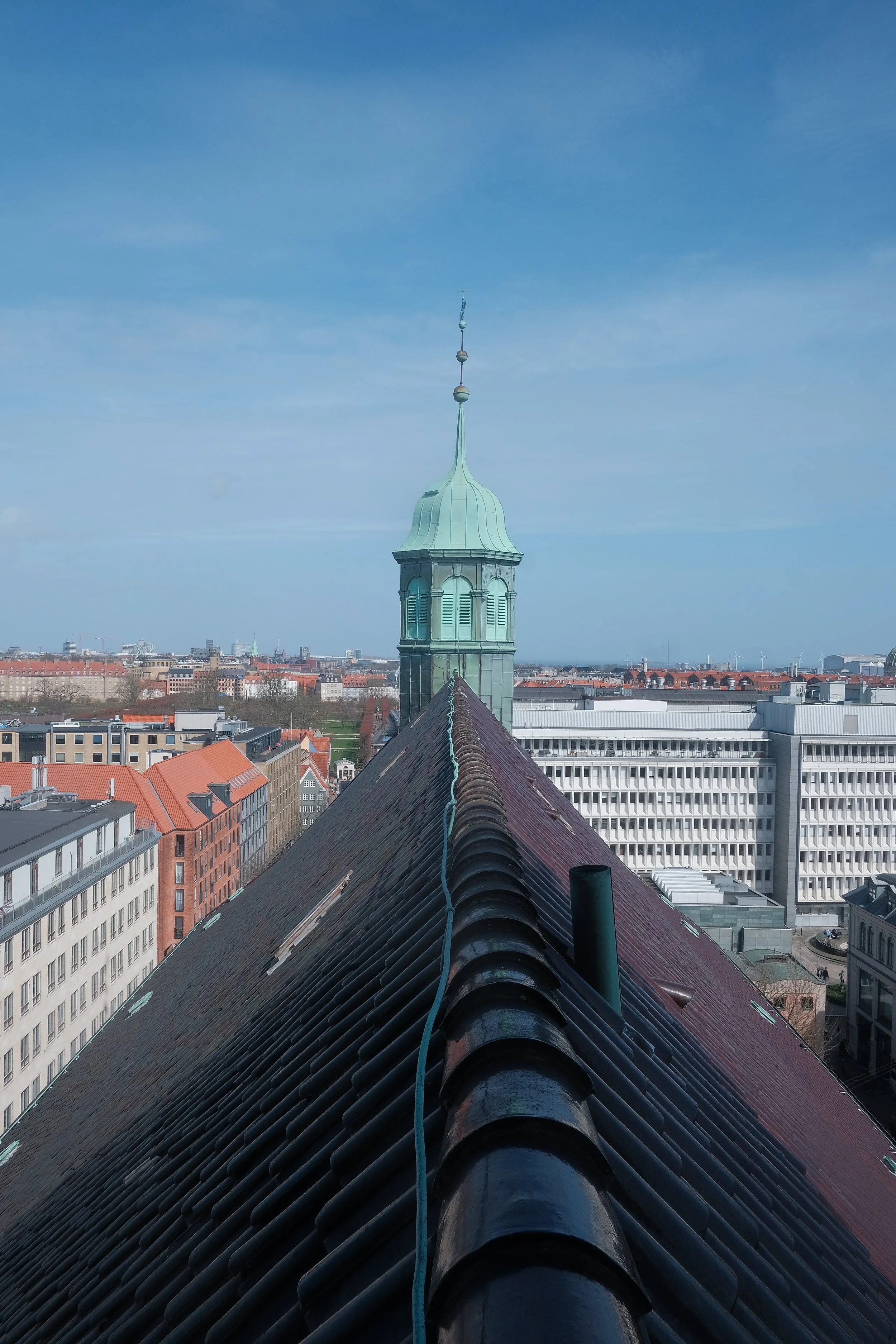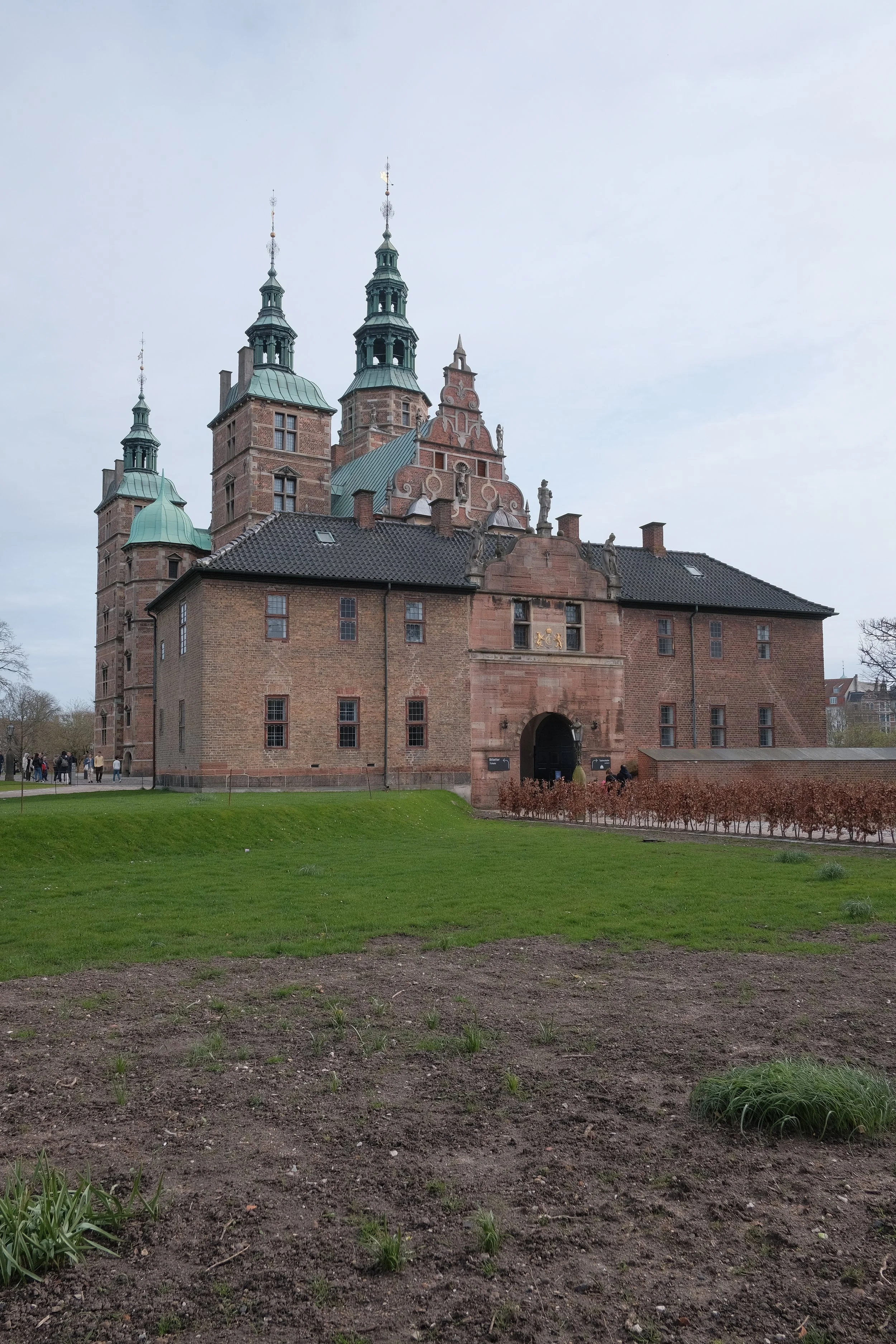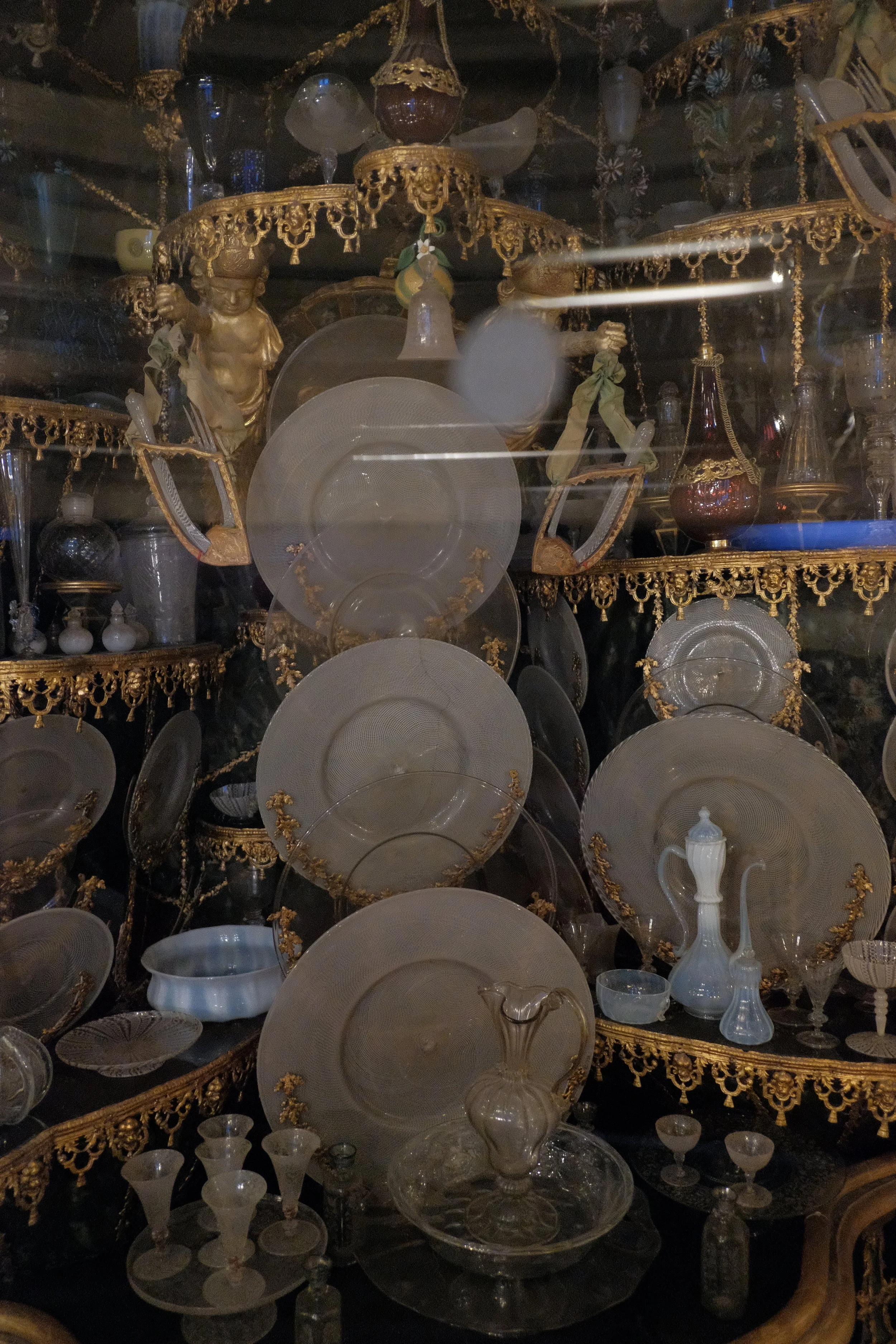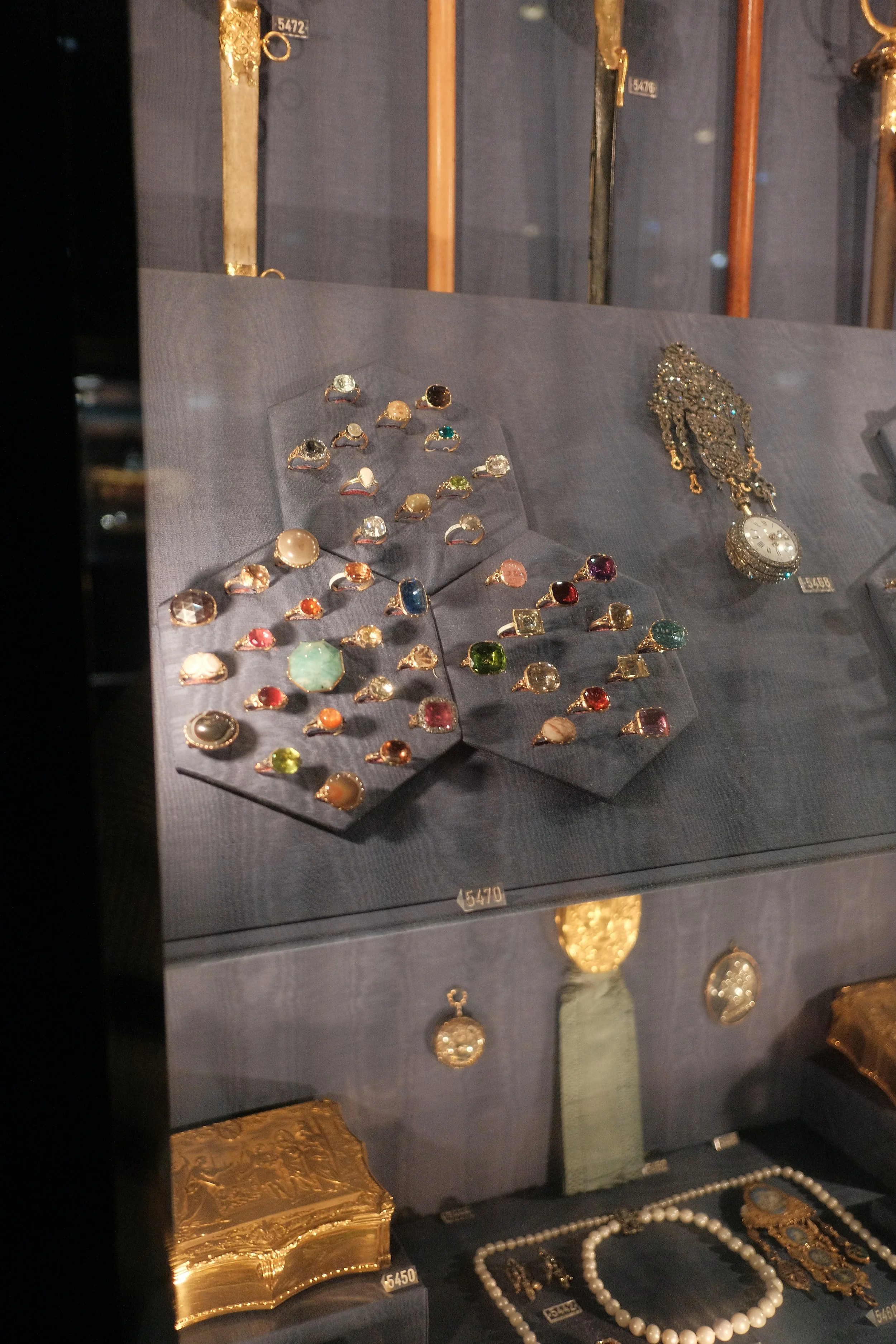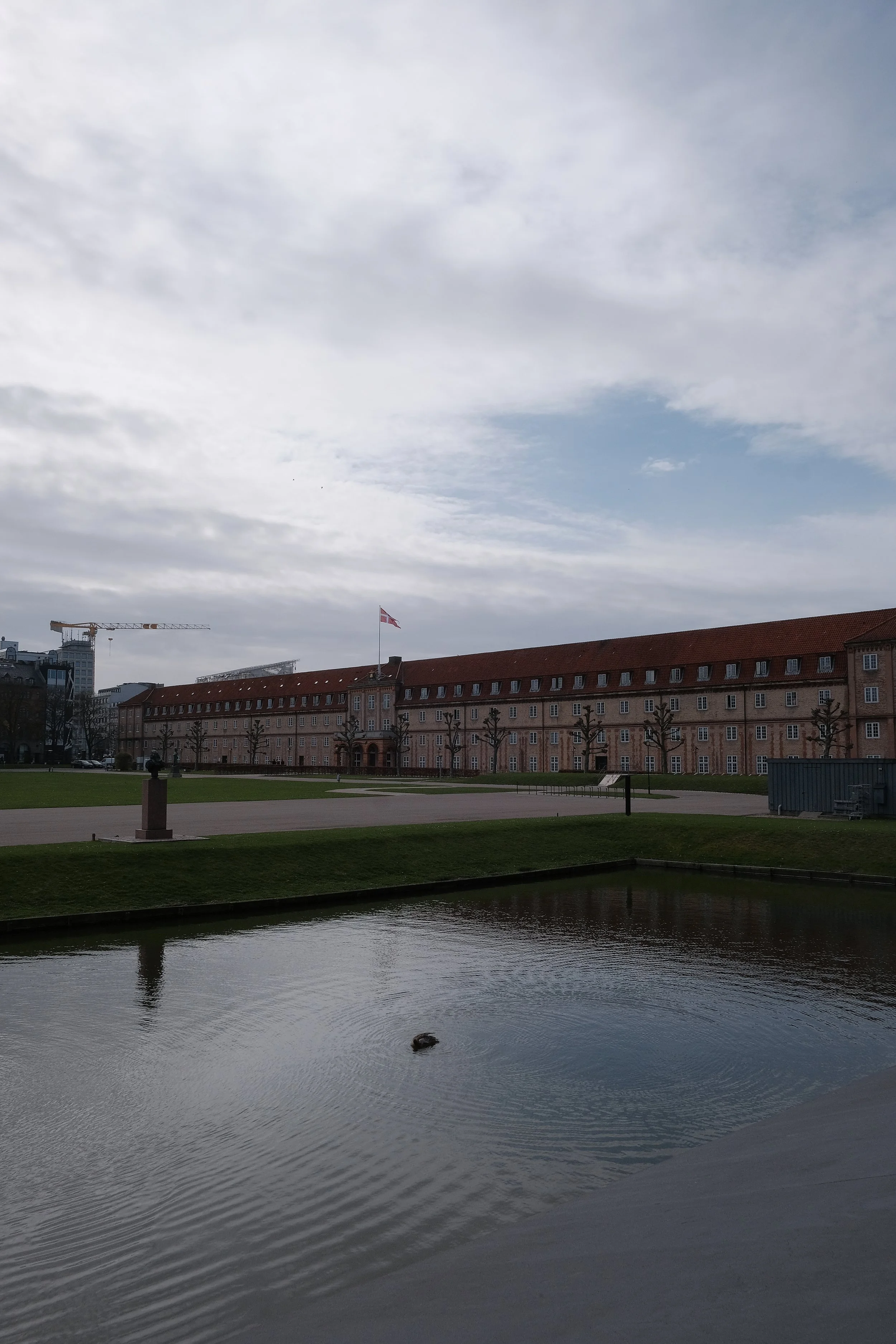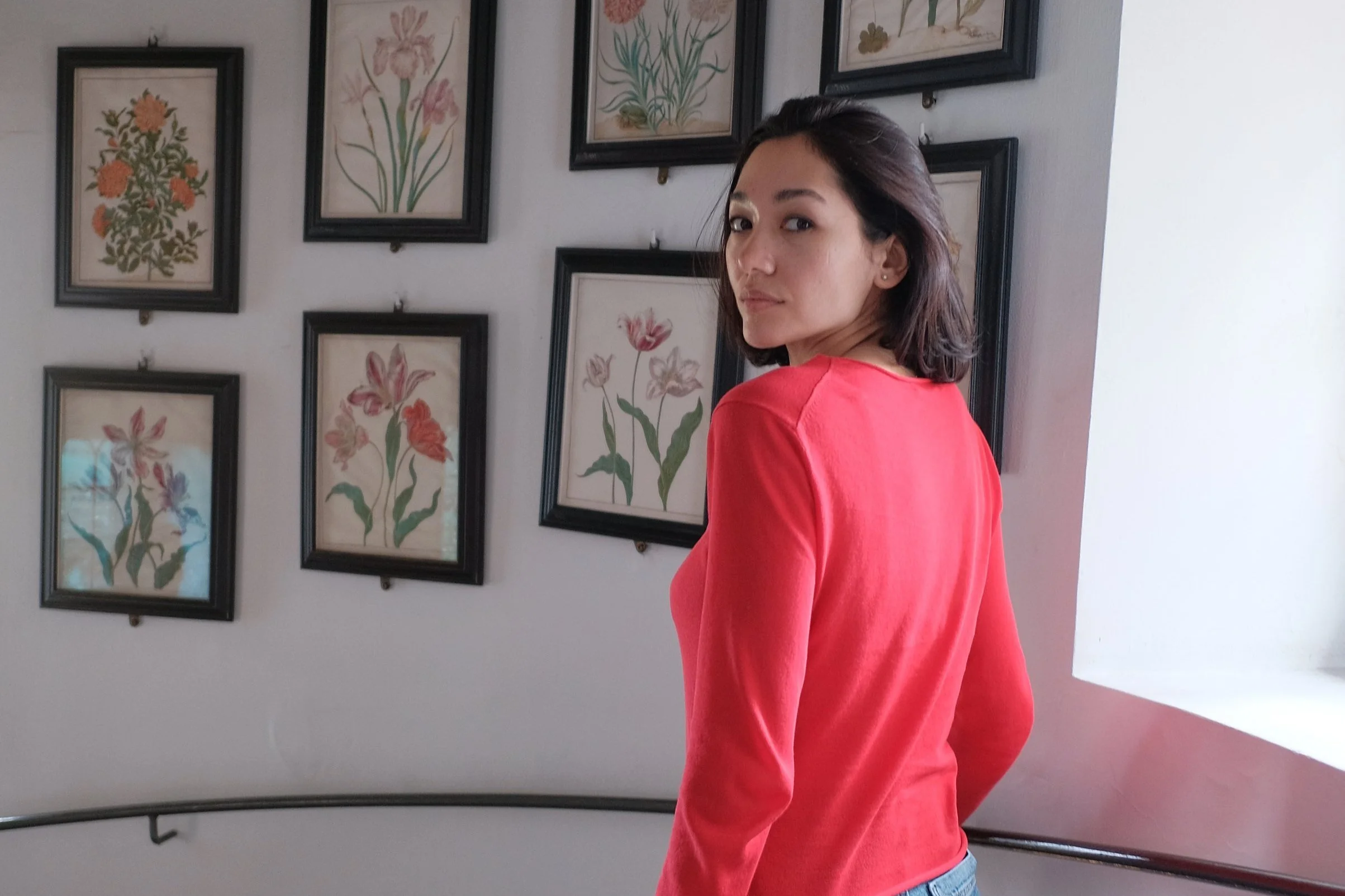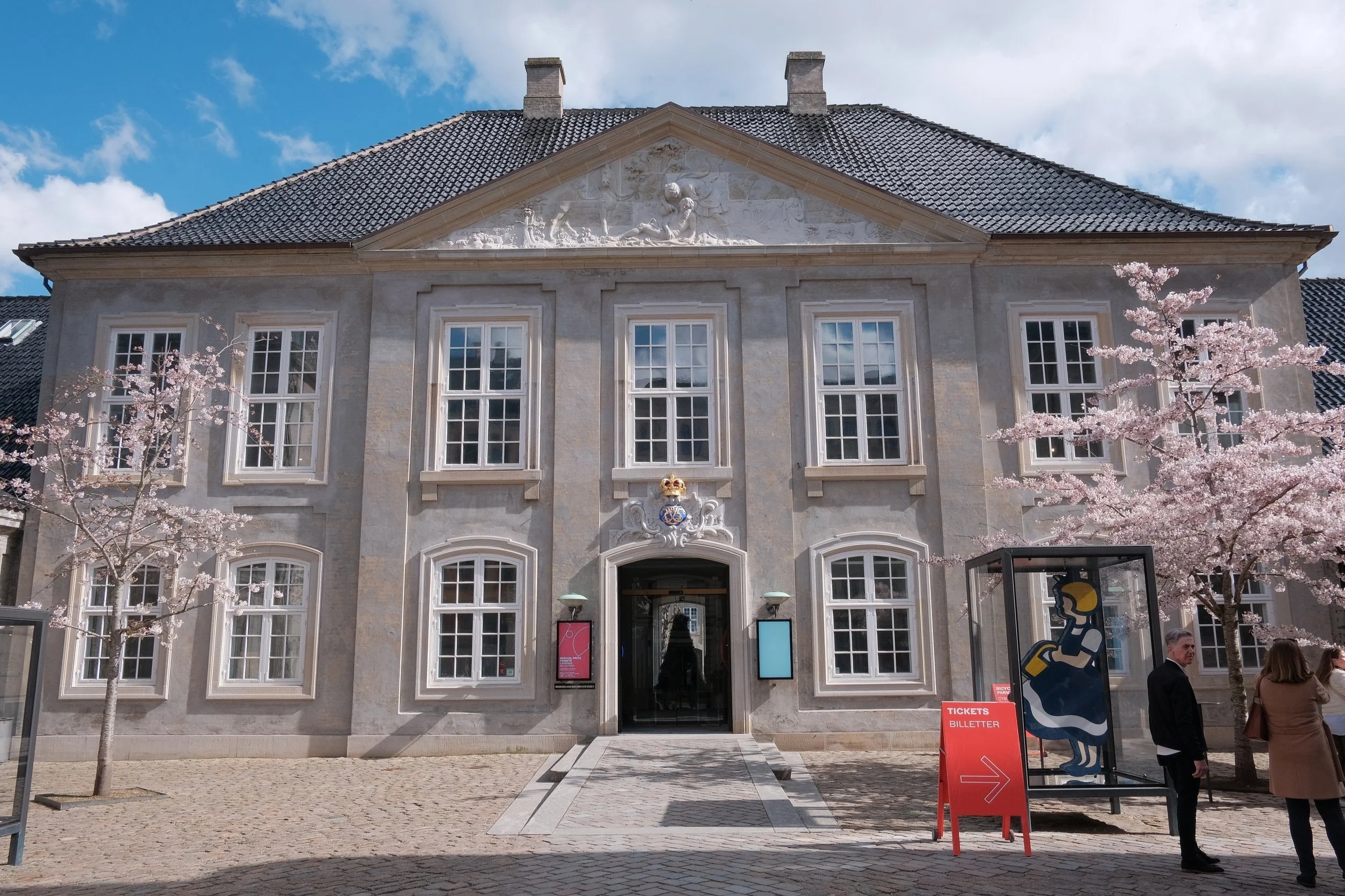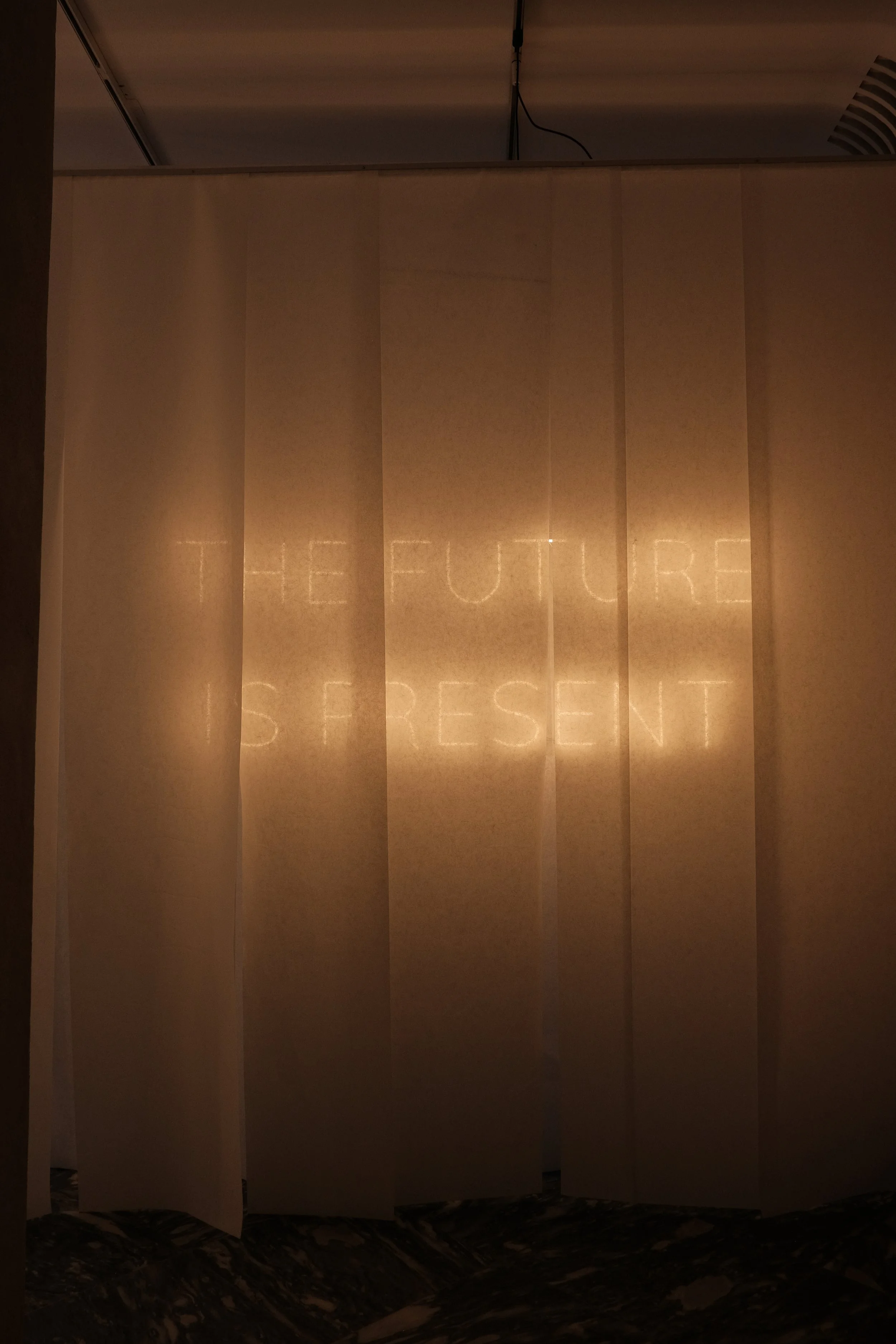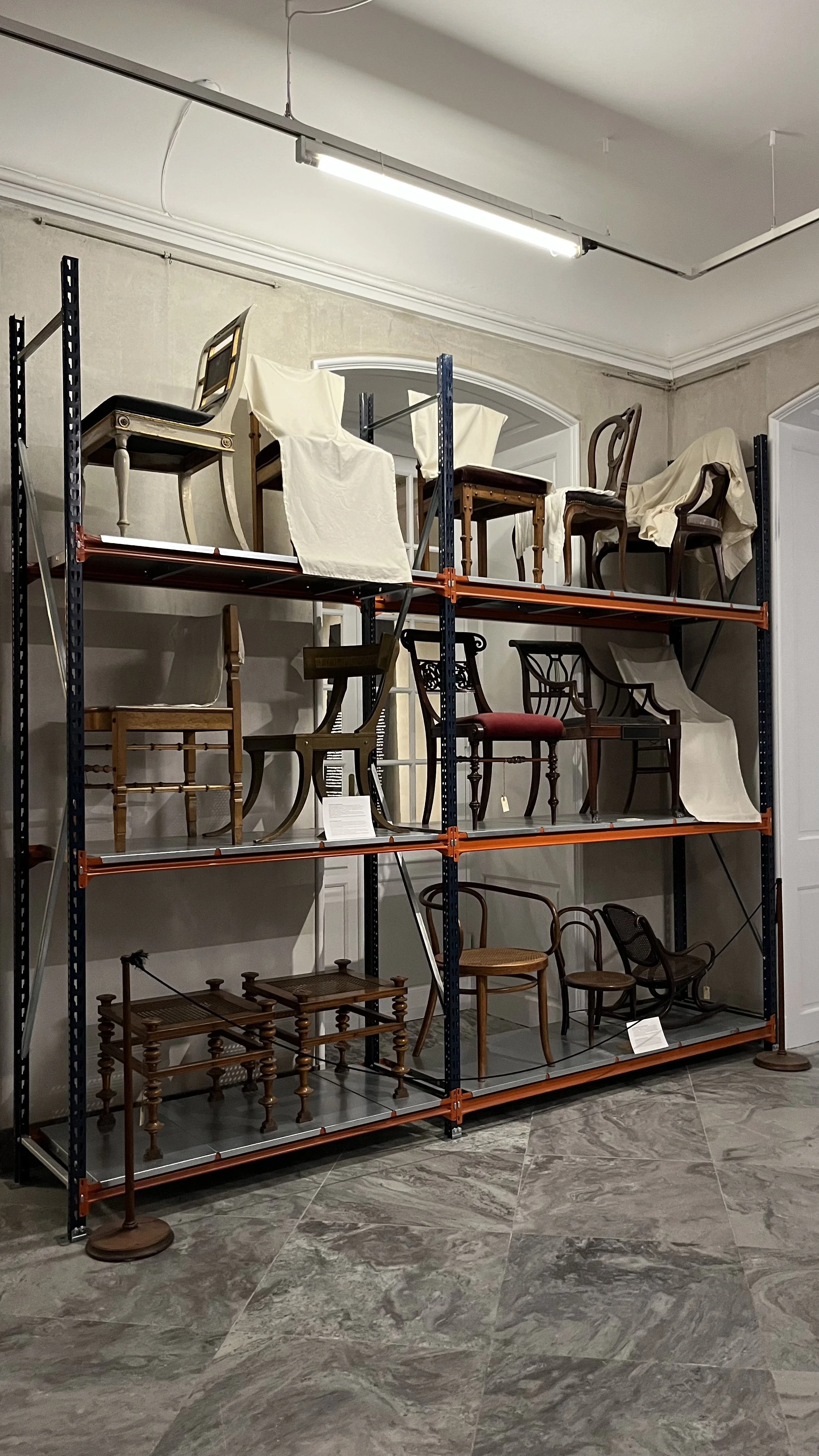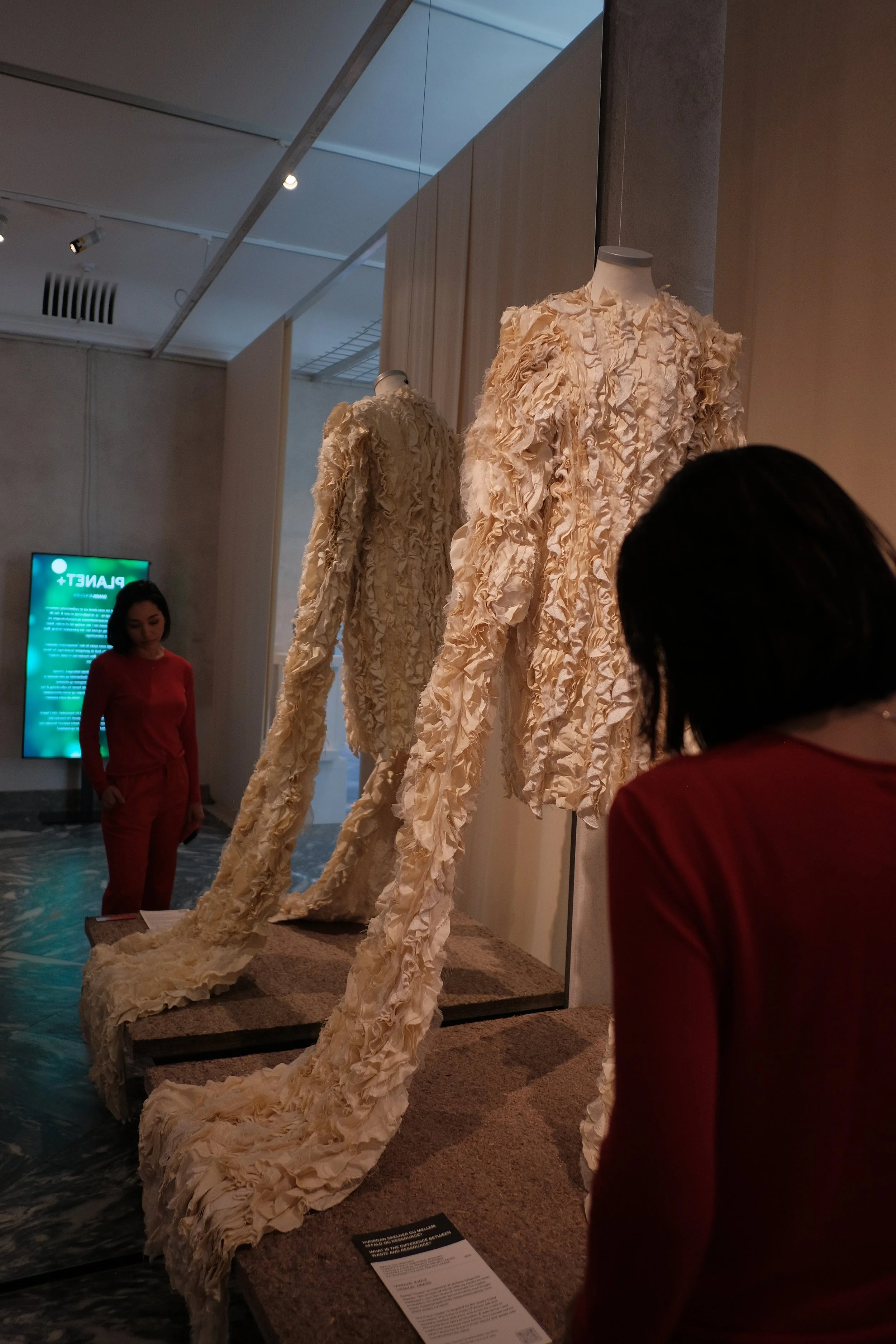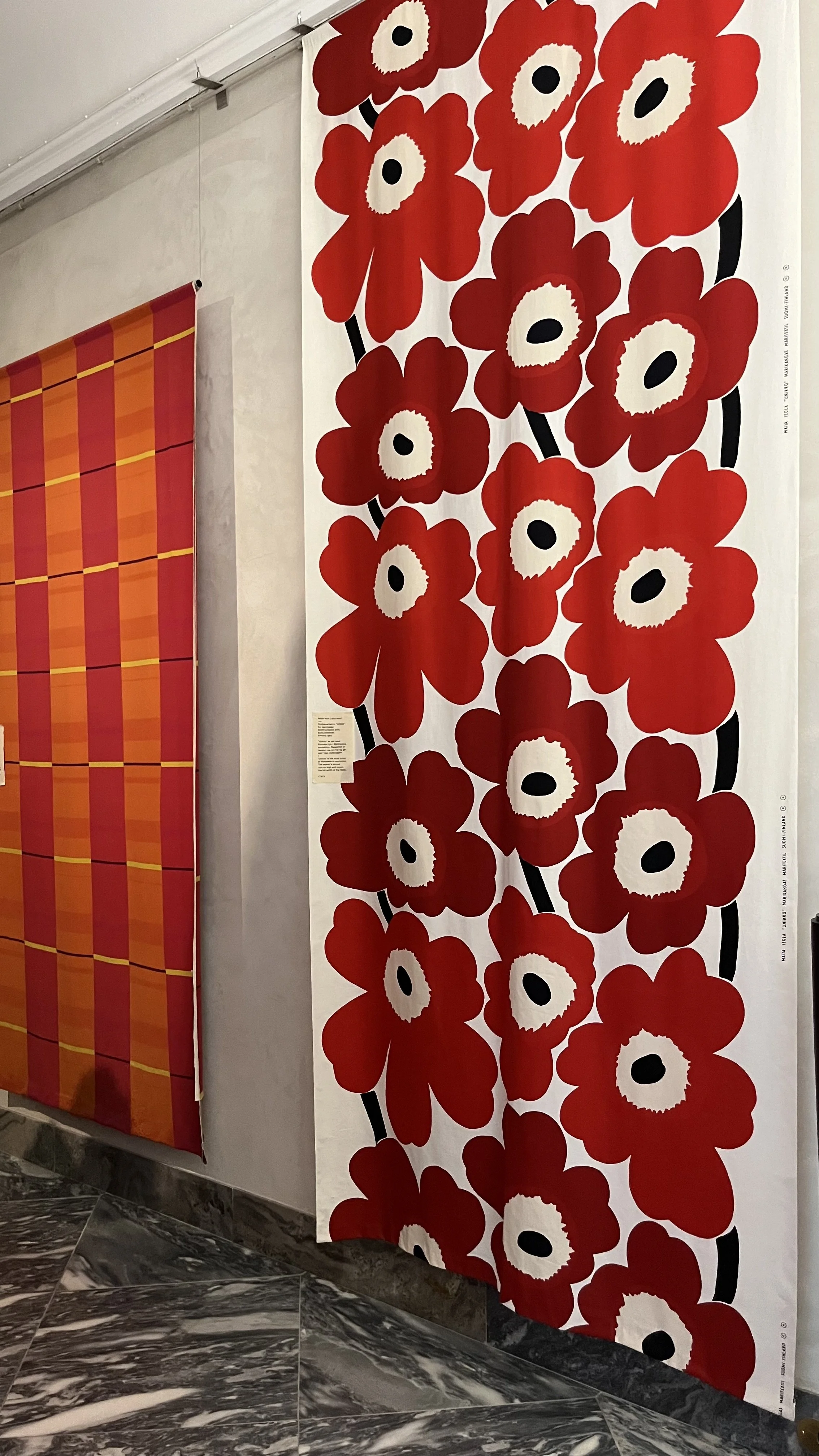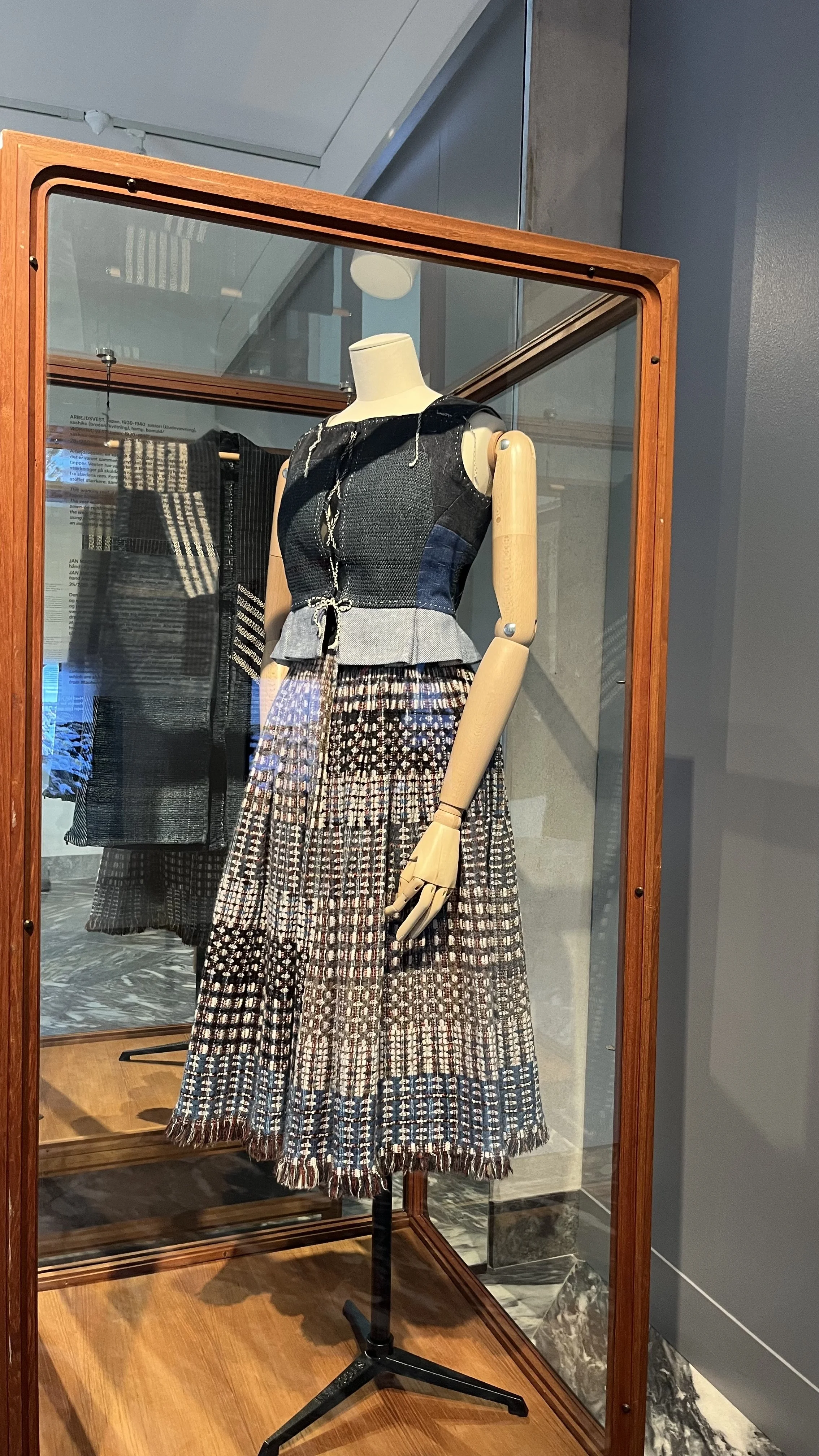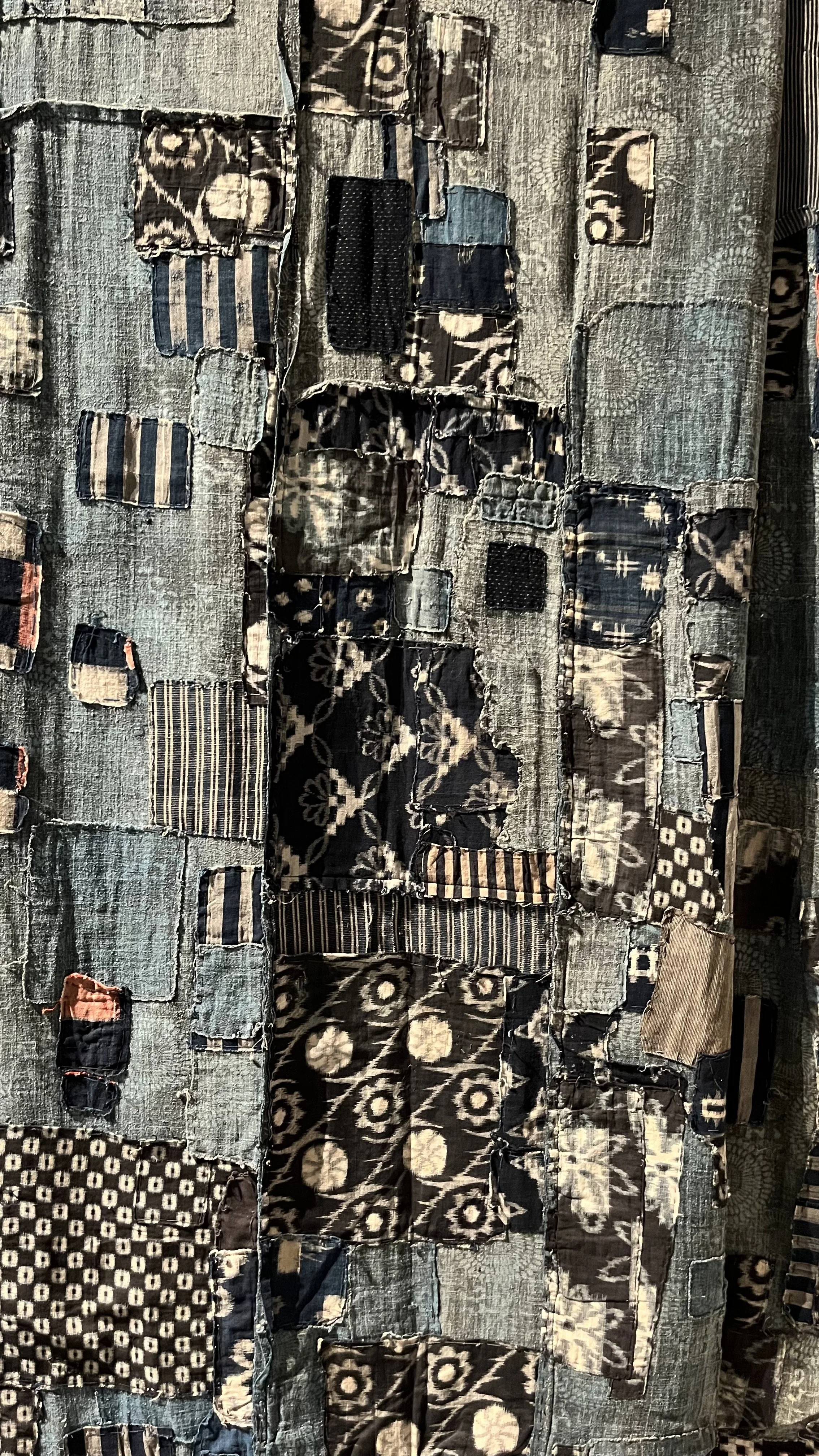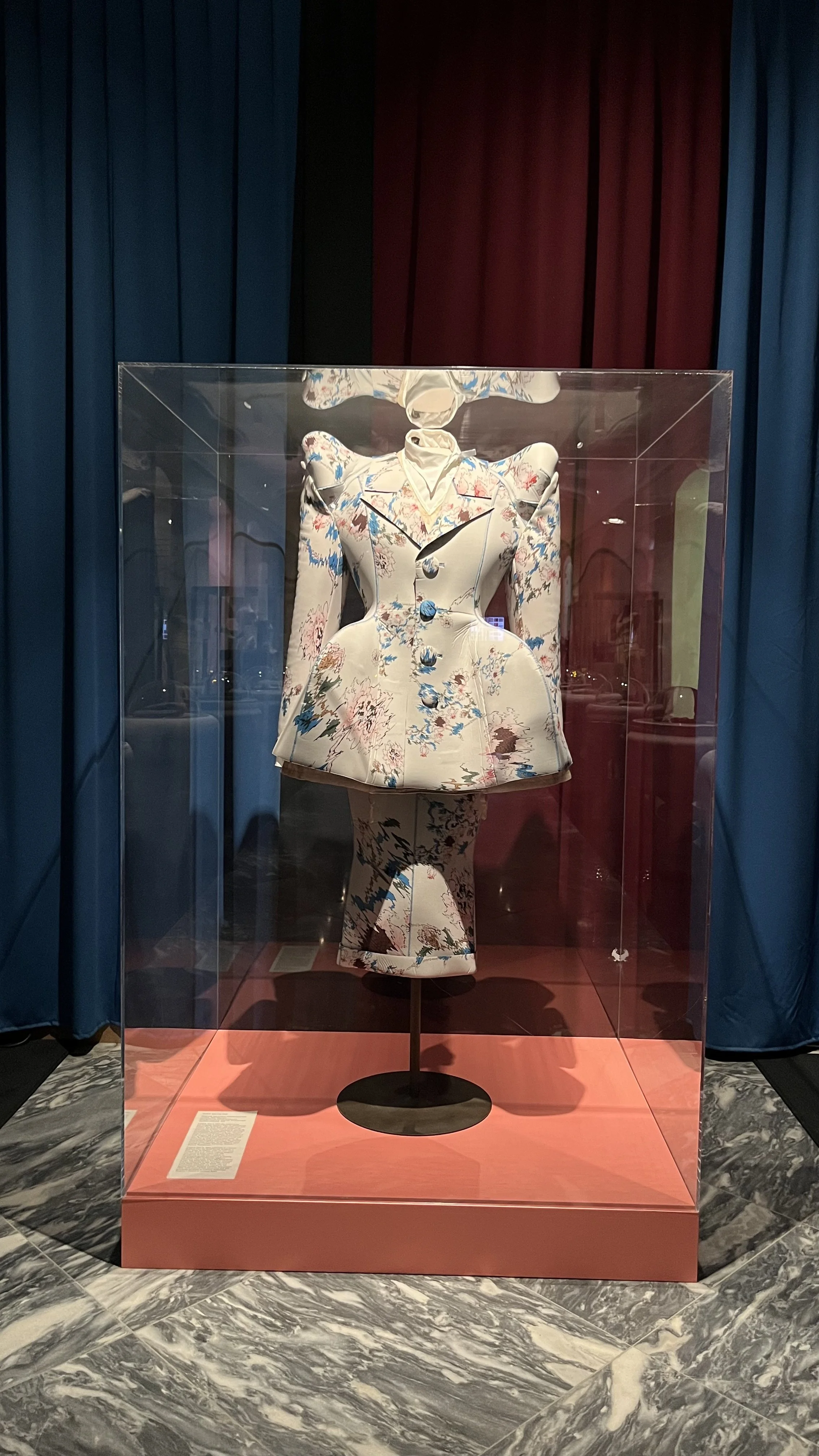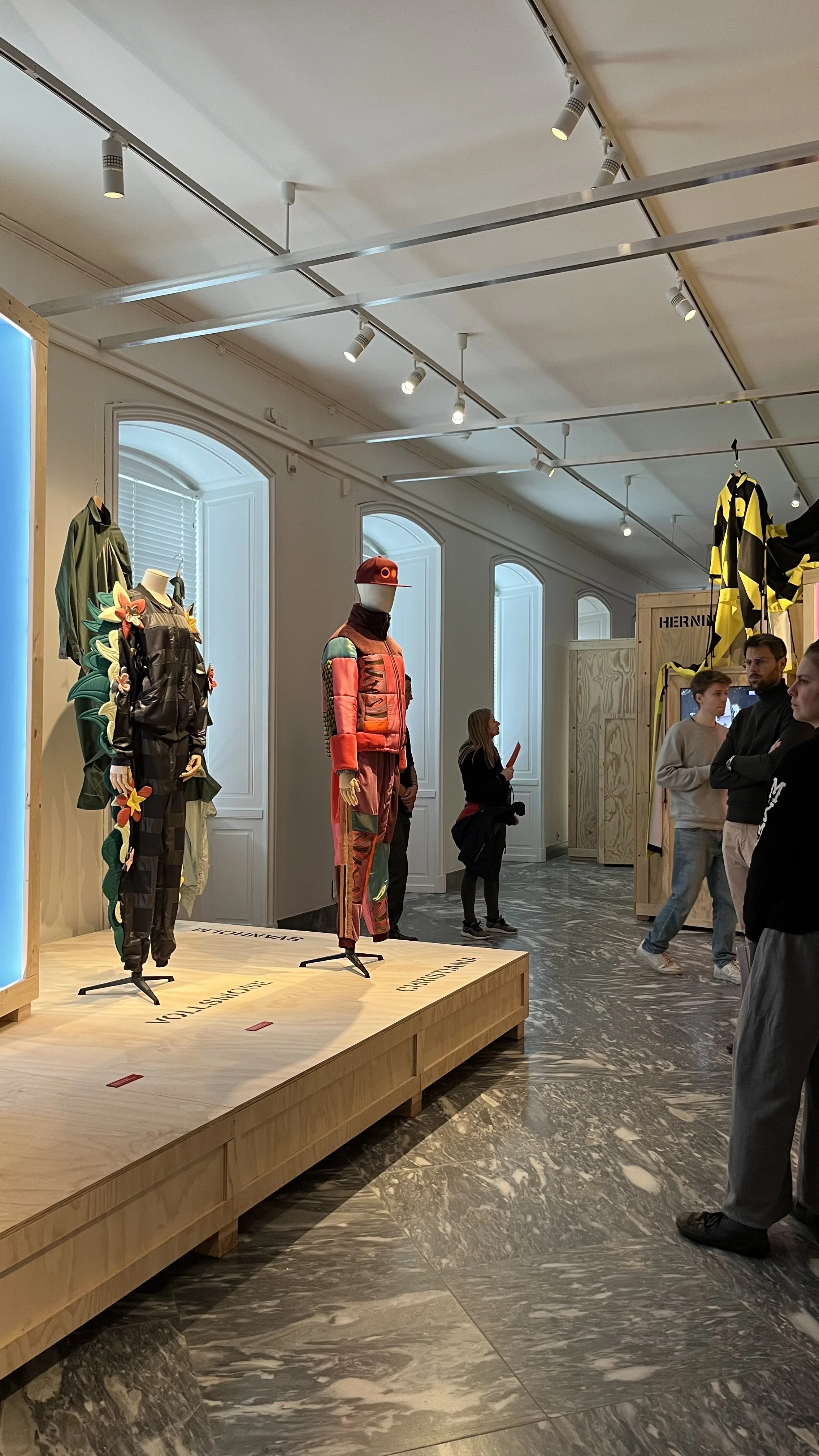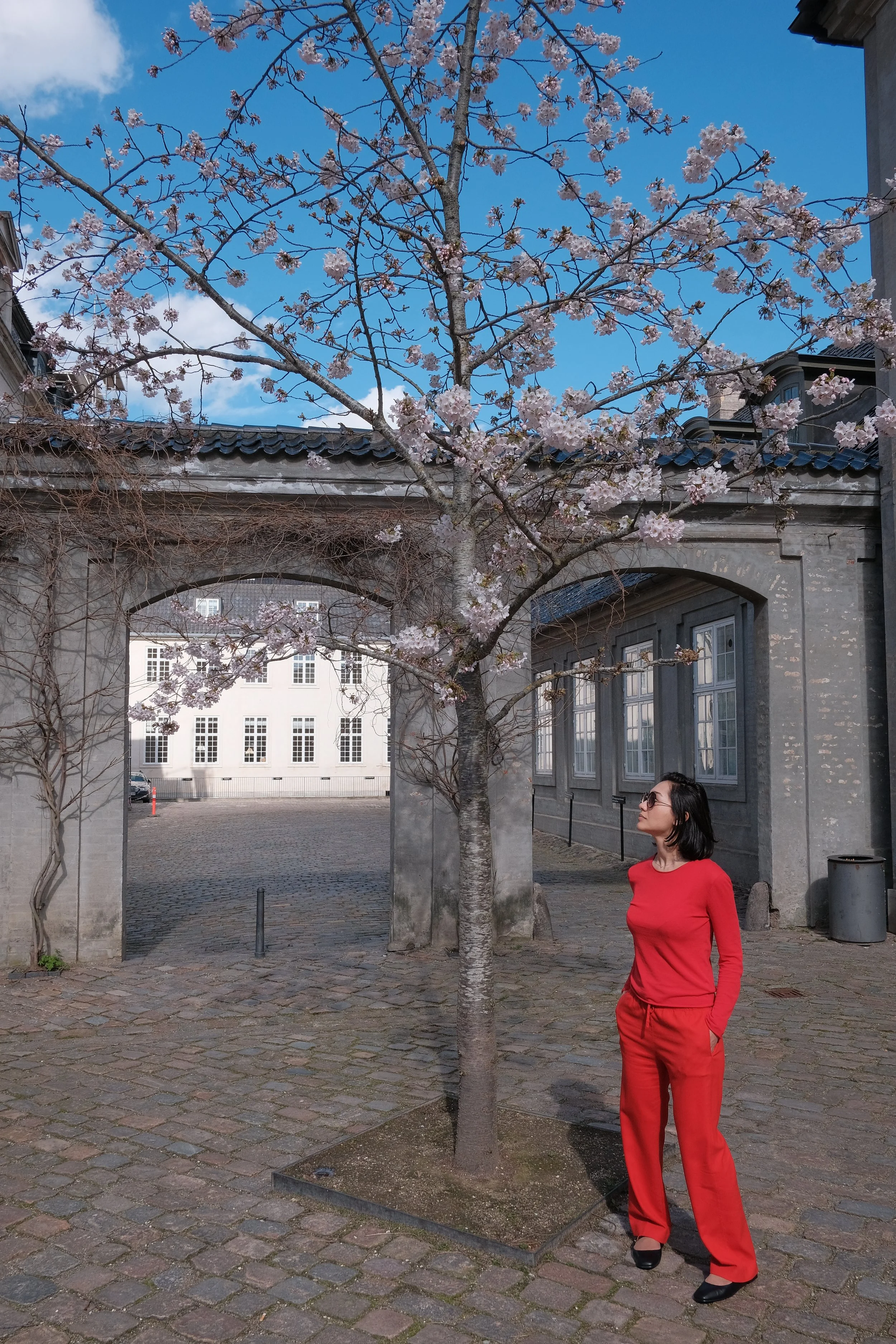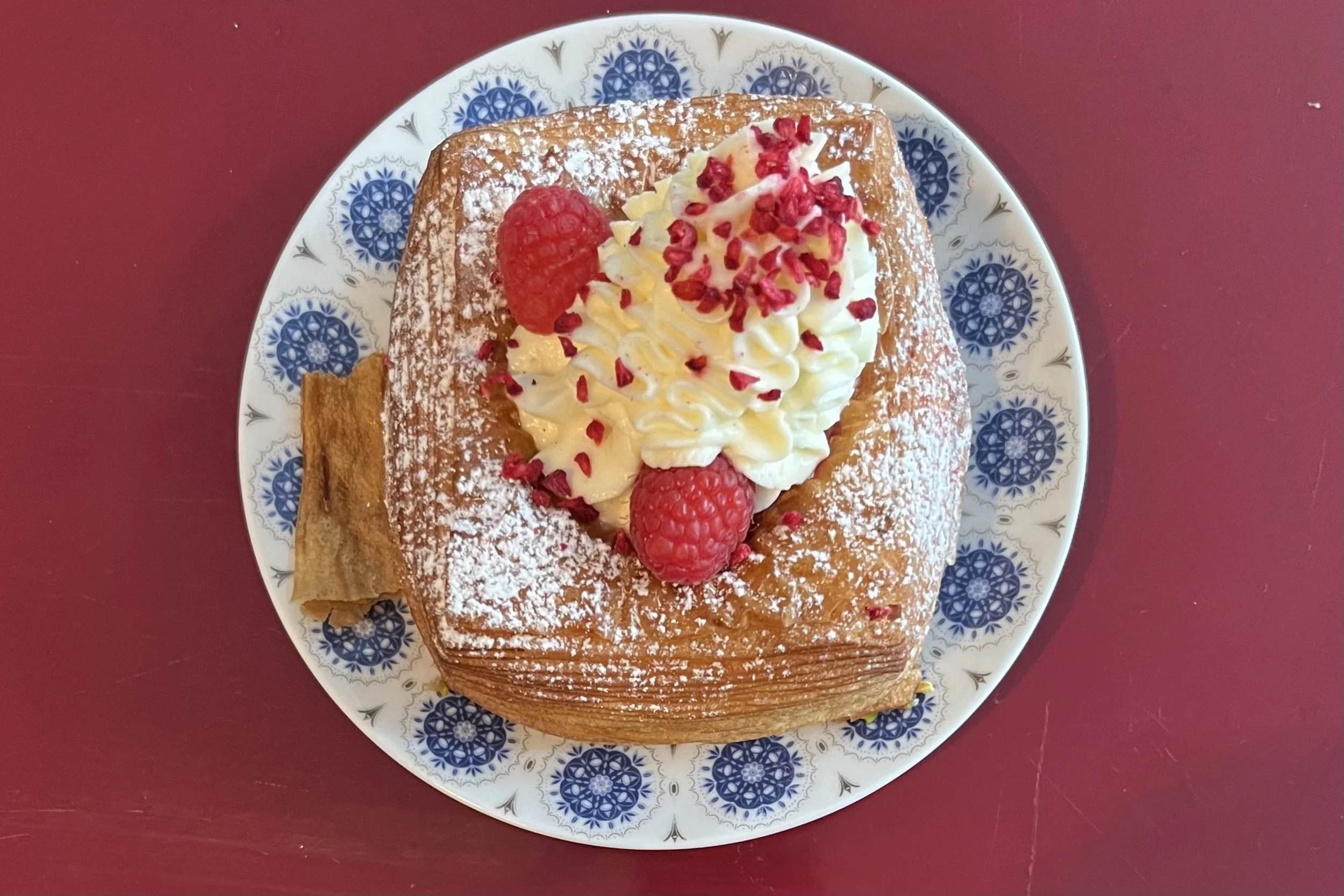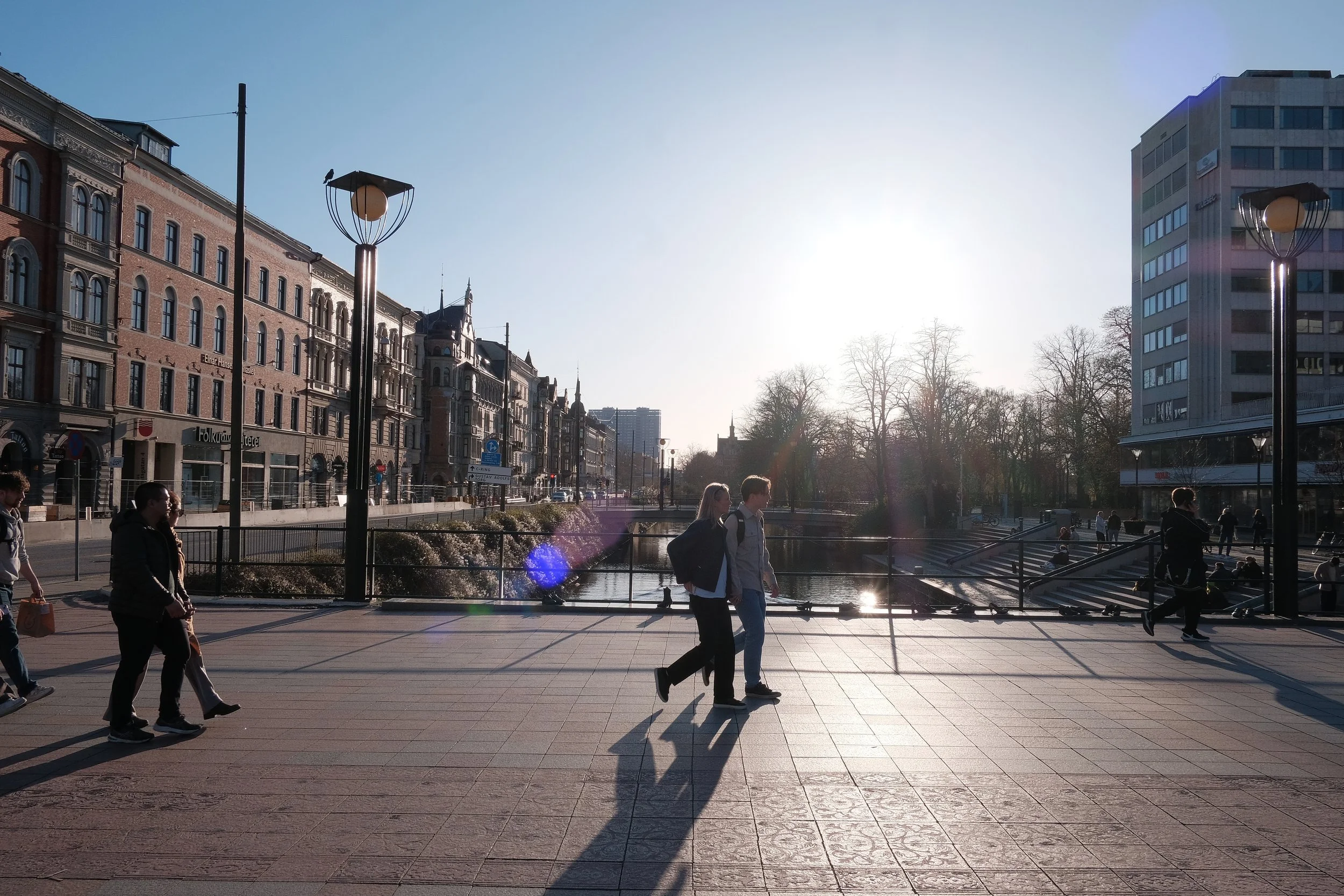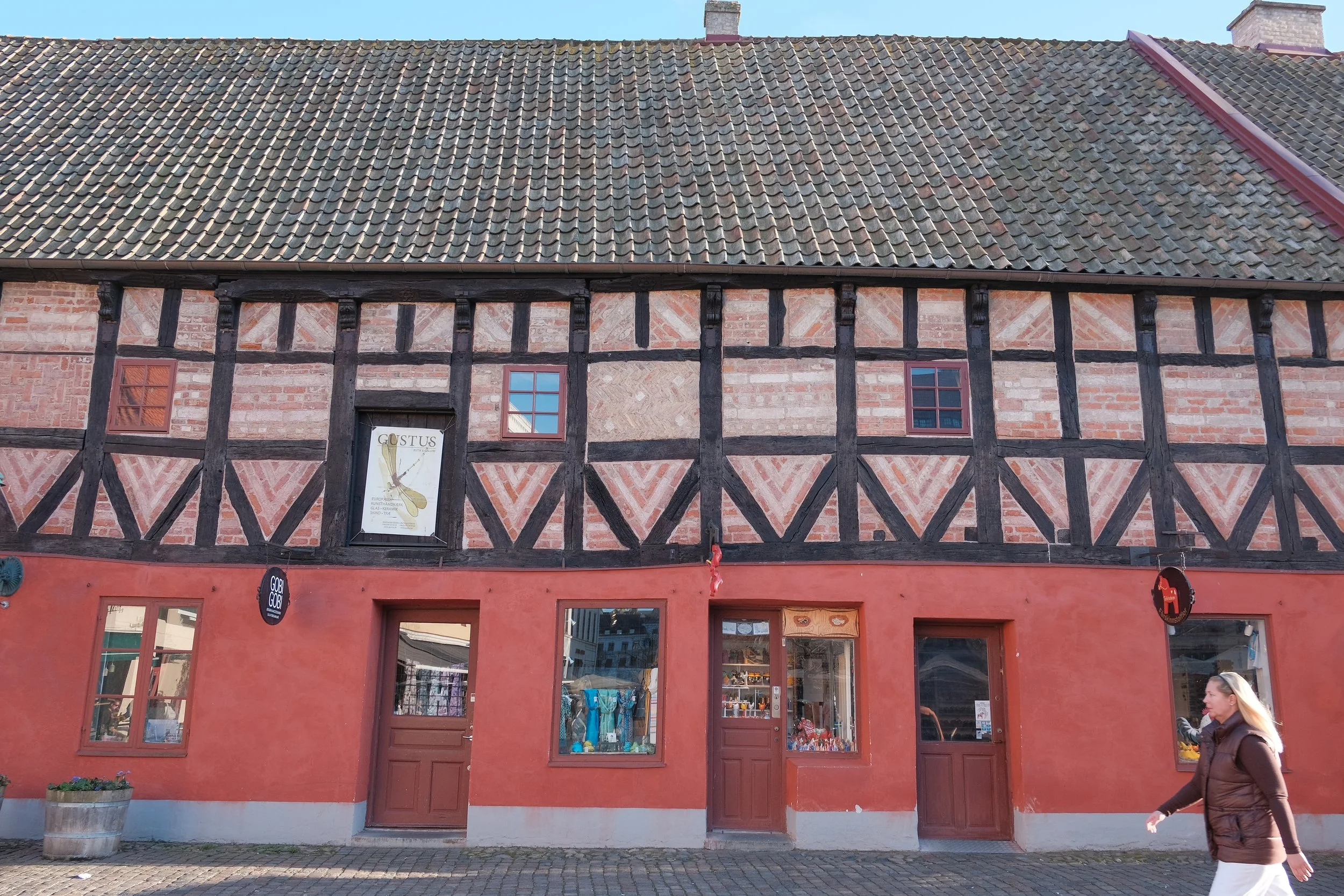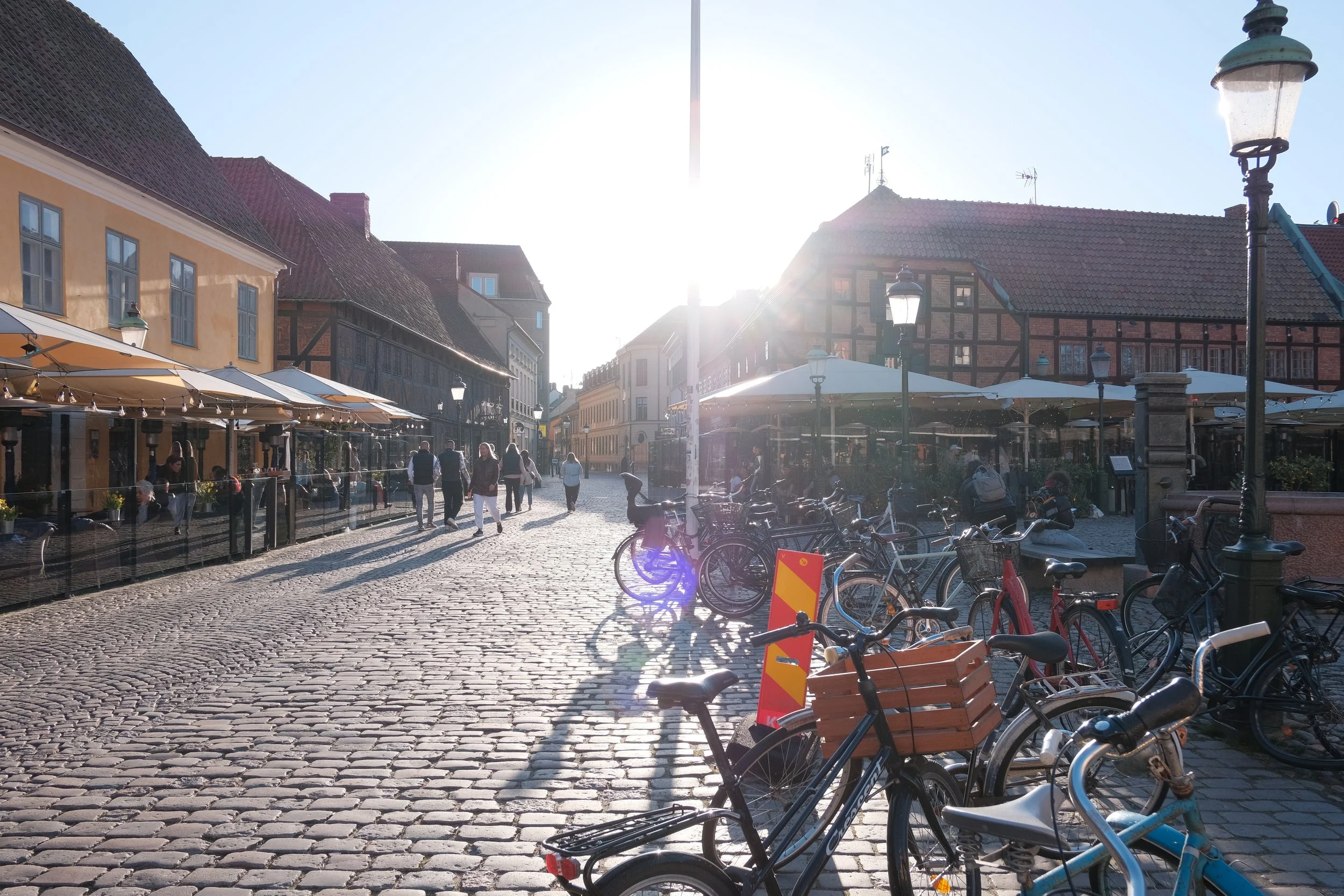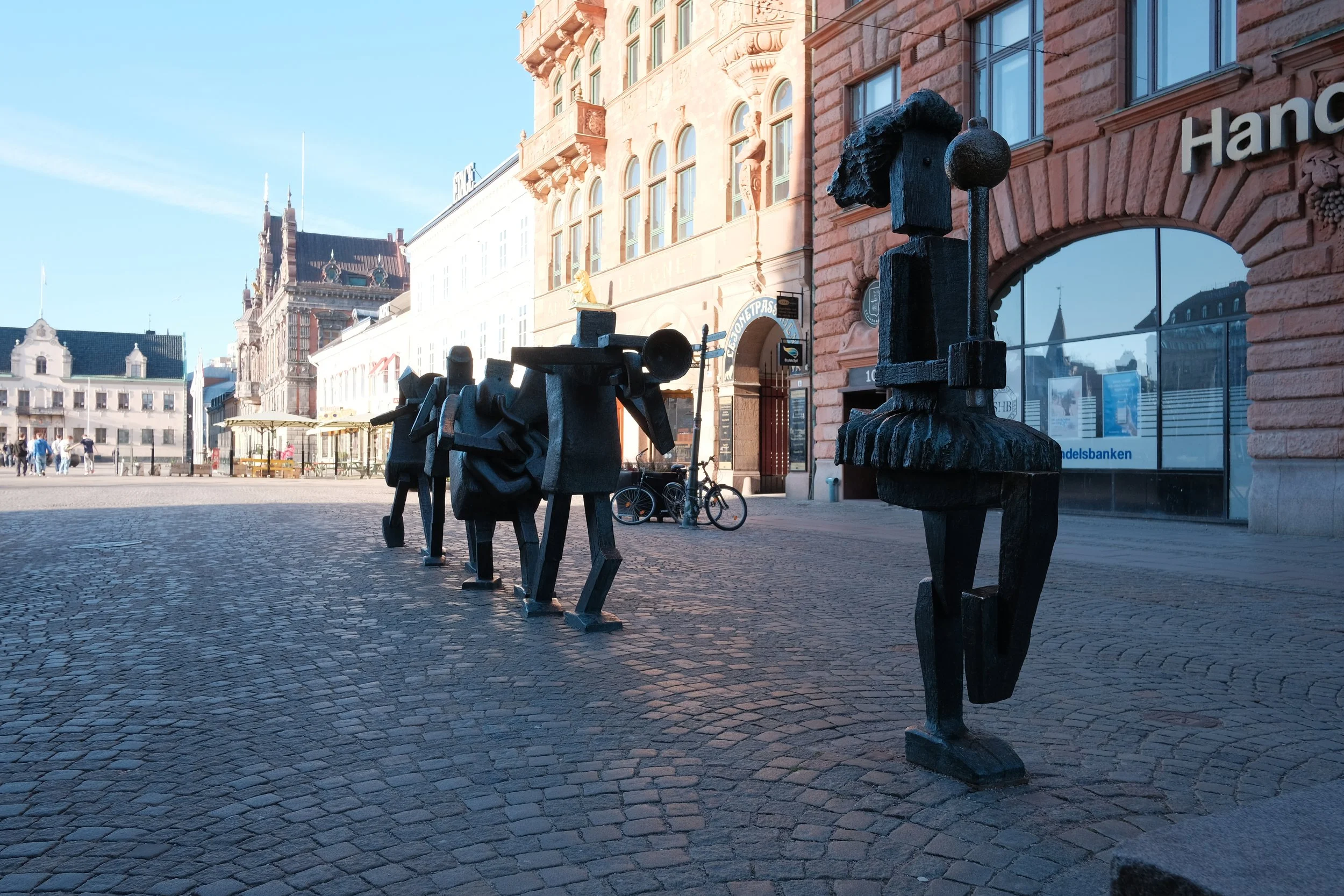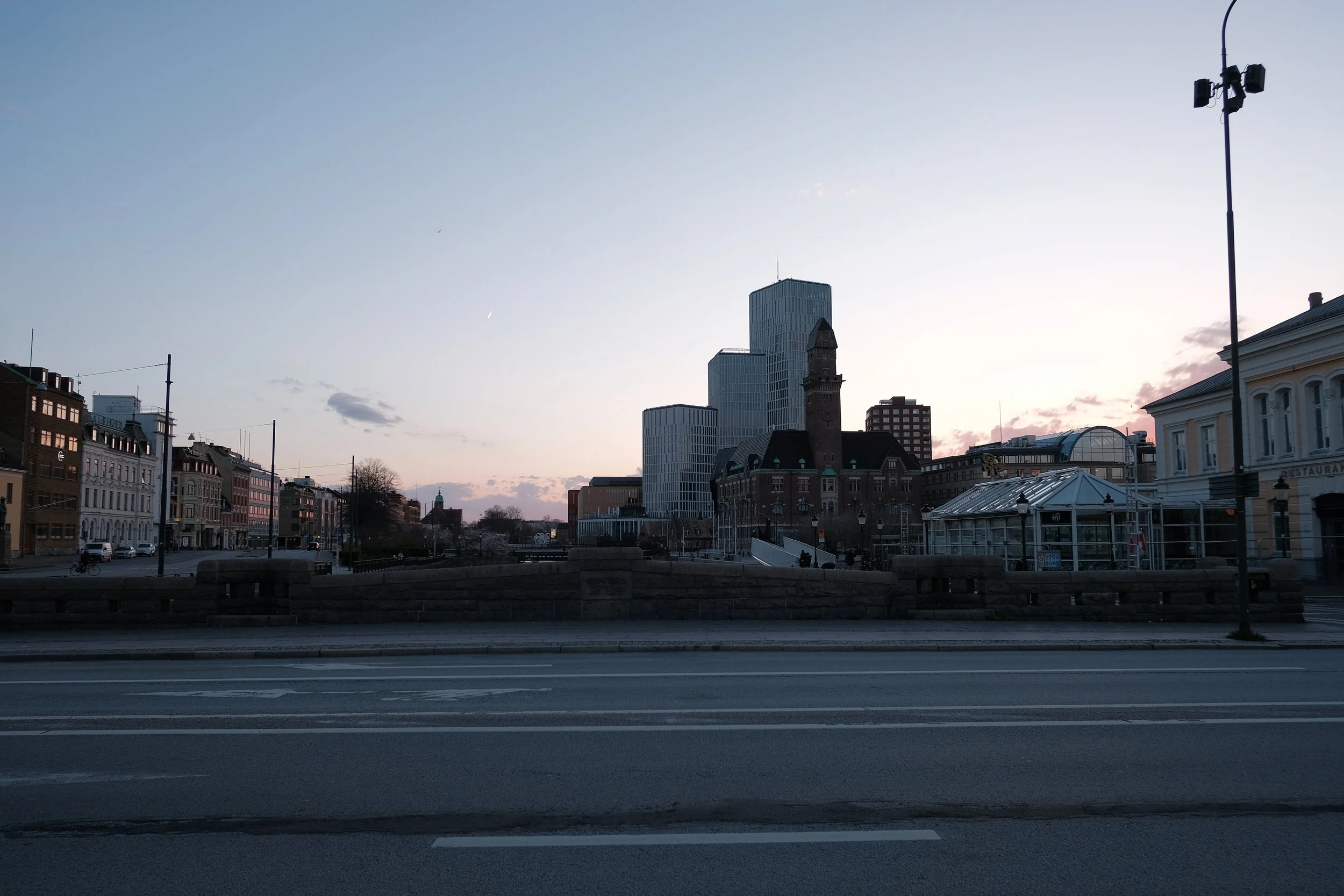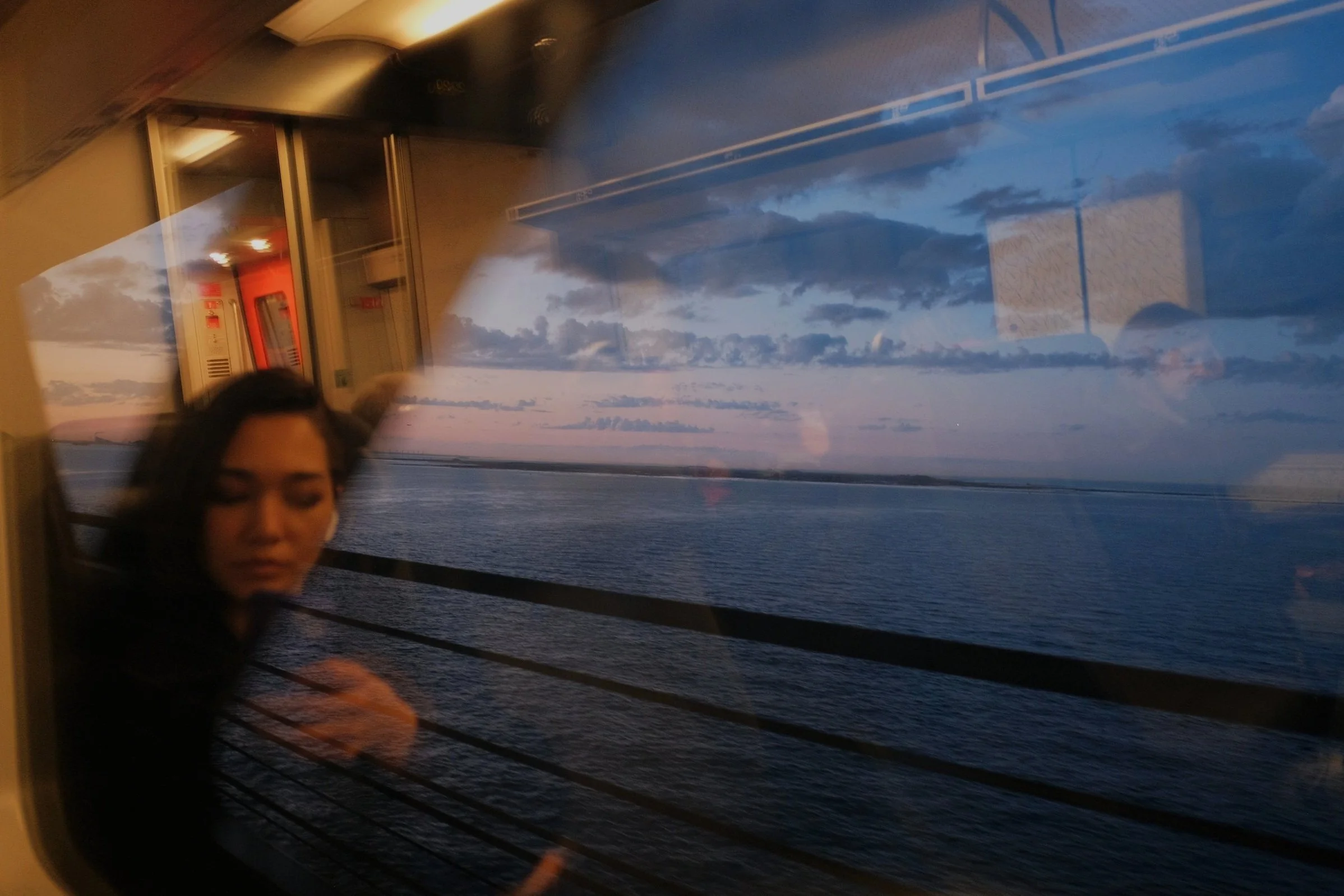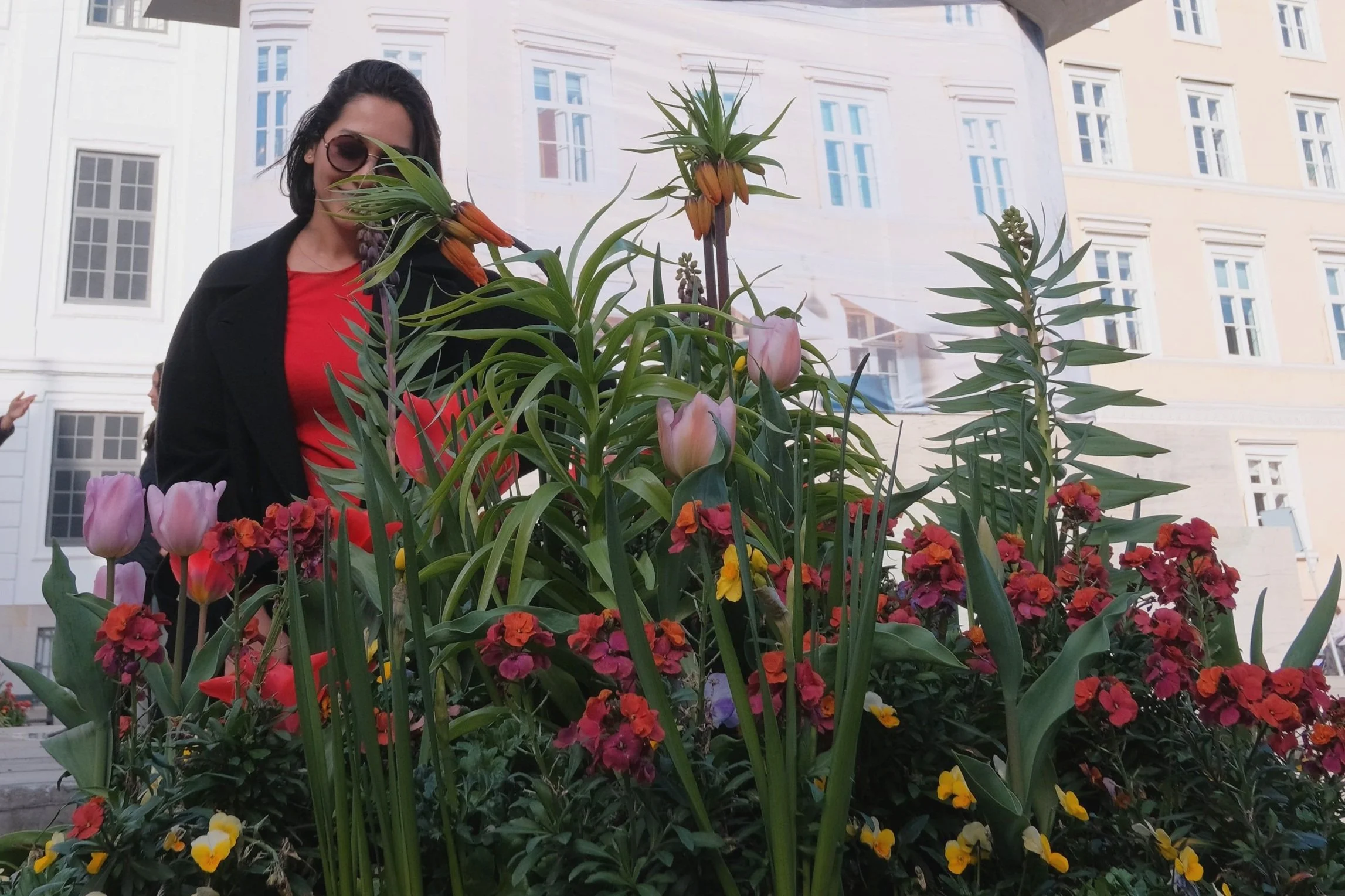Copenhagen in April: Blooming, Shining, and Full of Danish Hygge
Copenhagen in April was pure magic. Sakura trees and my favorite flowers—tulips—welcomed me under soft sunshine, and I couldn’t have asked for better weather. It felt like a gentle invitation to slow down, breathe in the sea air, and sip something warm—because, yes, even with the sun, it was still chilly.
I arrived just as winter was letting go. There was still a bite in the air, but spring was already flirting with the city. The terraces of cozy cafés were full of people soaking up every bit of sunshine. Like in many northern cities, when the sun comes out, everyone heads outside to enjoy it. And I decided to join them!
What I noticed immediately—and absolutely loved—was the style, both of the city and its people. Everything moved with a quiet kind of elegance. It reminded me that I was in Scandinavia: everything looked so clean, minimal, and effortlessly beautiful. That’s when I realized—Copenhagen knows how to make simplicity look graceful.
Let me show you what I saw, felt, and of course—tasted.
History & Culture
Copenhagen has a long and layered history, quietly woven into its streets and harbors. In the 10th century, it was a Viking fishing village. By the 15th century, it had grown into a city and became Denmark’s capital. Even the name says it all—it means “merchant’s harbor,” a place built on trade and connection. Walking around today, you can still feel that link between past and present, land and water. It’s a city that has grown with quiet grace, just like everything else about it.
I was thinking about all of this while sitting at Nyhavn, Copenhagen’s most iconic spot—a waterfront canal lined with colorful facades. As I looked at the postcard-perfect houses reflected in the water, I knew this place was more than a tourist highlight. Copenhagen has a philosophy. It’s a city built around human comfort, intelligent design, and a deep respect for nature. There are unspoken rules of community care: sidewalks are wide, bikes have their own lanes, and the bicycle parking areas feel like little worlds of their own. And the coffee? It’s not gulped down—it’s savored here. Of course, it comes with a perfectly baked bun on the side.
Moments of Hygge
You can’t really understand Denmark without getting a sense of hygge. It’s not just about candles and cozy corners—it’s more about how you feel. As Meik Wiking says in The Little Book of Hygge, "Hygge is about an atmosphere and an experience, rather than about things. It is about being with the people we love. A feeling of home. A feeling that we are safe..."
I think hygge is what helps Danes get through those long, dark winters. It’s about creating warmth in small, intentional ways. I felt it in unexpected places: in bakeries, in the smell of cinnamon and fresh bread, in quiet streets, in vintage shops, or in little stores selling slow fashion or colorful objects made from recycled plastic bottles.
I first learned to slow down in The Hague. Here in the Netherlands, there’s a similar concept called gezelligheid—but that’s a story I’ll share another day. In Copenhagen, I felt that slowing down could mean something even deeper. It’s not just about taking a break or resting—it’s about noticing what reveals itself when you stop rushing.
This world constantly pushes us to move faster, to do more, to never pause. Under that pressure, we’re often afraid to stop—even for a moment—afraid we won’t have time to reach our goals, or that the to-do list will never get done.
But here, I felt something shift. I truly believe now: only when we slow down can we see the things that matter most—those quiet, meaningful things that are always there, just hidden behind the noise and much more important than everything we may chase. And only in that stillness can we find the strength to do what we’d never manage under the pressure of a chaotic life.
Copenhagen reminded me: slow isn’t the opposite of efficient or exciting. It’s just a different rhythm—one that makes space for connection, beauty, and meaning.
Architecture and a View from the Round Tower
I’ve always loved architecture—I think it tells a place’s story quietly but powerfully, revealing something essential about the lifestyle. The way people build and live explains so much: the traditions, the climate, the available resources.
Take the big windows in Northern countries, for example. They’re not just aesthetic; they help bring in as much daylight as possible during those long, dark winters. Even that small detail reveals something about the nature of life here.
I took a slow stroll through the city and made my way to the Round Tower—a 17th-century tower with a spiral ramp instead of stairs. I went up for the view. It was a beautiful, sunny day. Light poured through the windows as I climbed, and I found myself pausing at every opening, catching glimpses of the city below.
The interior felt almost monastic: whitewashed walls, small, modest windows, bricks underfoot. Simple and serene. So minimal, so Scandinavian, isn’t it?
And then, at the top—the view. A patchwork of terra-cotta rooftops, soft greys, and those signature green domes and spires stretching across the skyline. It was quiet, breathtaking, and unexpectedly moving.
A simple moment, yes—but one of those that shifts something inside you. And stays with you.
Rosenborg Castle: Dutch Renaissance, Jewels, and Tulips
Rosenborg Castle was originally built as a summer residence in 1606 and expanded into its current form by 1624. Designed in the Dutch Renaissance style, it reflects the architectural character of 17th-century Denmark. It was one of the many grand projects initiated by King Christian IV, who ruled Denmark and Norway for nearly 60 years (from 1588 until his death in 1648)—the longest reign in Scandinavian history.
The castle is surrounded by the beautiful King’s Garden, offering a peaceful place to wander, admire the symmetry of the landscape, and take in the castle’s façade—majestic yet somehow cozy in scale—perhaps because of the brickwork, once again.
Today, Rosenborg functions as a museum, and stepping inside feels like stepping back in time. Every room holds traces of royal life, rich with charm and grandeur. The interiors are beautifully preserved, and as you move through the halls—past tapestries, chandeliers, and portraits—you catch glimpses of a world that once was.
Then, in the basement, something unexpected happened. I came face-to-face with the Danish crown jewels. I had thought: just jewels. But something shifted. I couldn’t move. I stood there, completely captivated by the intricate designs, the shimmer, the quiet power they radiated. What is it about diamonds and gold? What do they awaken in us—especially in women? There’s some ancient magic in them, I’m sure.
And then something else caught my eye: tulips. In the patterns, the objects, the tiny details—they were blooming quietly throughout the art and decor of the palace. And if you know me, you know how much I love tulips. Their delicate beauty, their poetic strength. I can’t pass by a tulip in art without stopping, admiring, and taking a photo for my growing collection in the gallery on my phone. Turns out, tulips are beloved here too. From Uzbekistan to the Netherlands to Denmark—they follow me or I follow them. Either way, they feel like a quiet sign that I’m exactly where I’m meant to be.
Learning Through Danish Design
I finally visited the Designmuseum Danmark. As someone who responds deeply to visual beauty, this museum was pure joy and inspiration.
I explored the elegant simplicity of Danish chairs, the history of table settings, the evolution of fashion and textiles, and the thoughtful approach to sustainability in clothing production. Every room offered something new to learn, something beautiful to admire.
The temporary exhibition especially left a mark on me. It gently shifted my perspective, made me think differently, and sparked reflections I didn’t expect. I walked out feeling inspired — and different. When I entered, I didn’t know all this. Now I do.
After the museum, I took a slow walk through the city, letting the sunshine and the rhythm of Copenhagen settle in.
A Taste of Denmark
Food in Denmark is thoughtful. Every ingredient tells a story. Every meal feels like a quiet celebration of seasonality, sustainability, and simplicity.
Smørrebrød
My first stop was the local market with the fresh food hall Torvehallerne—a place where you truly feel the soul of Danish cuisine: local, seasonal, and thoughtful. I had a few smørrebrøds, the traditional Danish open-faced sandwiches. I must’ve been very hungry after the flight, because I didn’t take any photos! I had one with salmon, another with mushrooms—just take my word for it, they were absolutely delicious.
I had another round of these sandwiches (this time with herring) later at place called Hyttefadet in Nyhavn. And now, while writing this article, I realized how much I’d love to go back. Cooking, I’ve found, has the magical power to transport you to the places you miss. I didn’t take any cooking classes in Copenhagen, so I turned to AI for a few traditional Smørrebrød recipes. It was surprisingly helpful. I followed the recipes (you can find them here)—and you know what? They tasted just like the ones I had in Denmark. With every bite, I was right back there.
Danish Pastries
I’ve always dreamed of visiting Denmark for its baked treasures—cinnamon buns, flaky pastries, and all those cozy delights that pair perfectly with a warm cup of coffee. It’s really hyggelig!
One morning, while walking through the city, I spotted a long line outside a bakery. The scent of fresh baking was irresistible—a second sign that I had to try something. I went in planning to get a cinnamon bun with a cappuccino… but ended up falling for the most beautiful croissant and Danish pastry I’d ever seen. In Denmark, they call those pastries with a cream in the middle wienerbrød, because the recipe was brought from Vienna in the 19th century.
It turned out to be one of the most memorable moments of my trip. That place? BUKA BAKERY. Absolutely worth the wait.
I have a few cinnamon bun recipes I’m testing now. As soon as I find the best one and make sure it works perfectly, I’ll share it with you. Make sure you’re signed up for my newsletter so you don’t miss it!
Fine Dining
There are some dinners you remember forever. Copenhagen offers plenty of exceptional restaurants for a fine dining experience—including those ranked among the best in the world, like Noma. But for places like that, you’ll need to book well in advance.
Since this was a quiet, somewhat spontaneous trip, I didn’t plan ahead. Still, I was lucky to get a table at a lovely restaurant called Den Lille Fede, known for its monthly-changing 5- to 7-course menus. The first thing they served was their homemade bread—an amazing start. Some of the other dishes are pictured below; everything was delicious. The waiter introduced each course with care, which made the whole experience even more special and meaningful.
Nightlife: Culture Box
Since it was a short trip for the weekend (and I am not in my 20s anymore…) I visited only one club, Culture Box. That night, a few great DJs surprised me with some proper electronic music. People were nice and polite, so I put my star on a Google Map here.
Crossing the Bridge: From Copenhagen to Malmö
On my last evening, I took a train from Copenhagen to Malmö—a little Swedish city just across the Öresund Strait. The ride was short, about 40 minutes, but unforgettable. As the train glided across the Öresund Bridge—half bridge, half tunnel—I watched the sun setting over the water. The light softened, the sky glowed, and I found myself drifting into a quiet, thoughtful mood. Isn’t it strange how moving between places can help you move through thoughts too?
There was no border to cross, no passport check—just a seamless shift between countries. Very European. Very me. Taking a train to another country just to have dinner, soak up a new atmosphere, and return again over the sea. I smiled at the simplicity of it all.
Malmö welcomed me with a slower pace. Less busy, less touristy than Copenhagen, but still with that clean, cozy Scandinavian vibe. I went to Bullen – Två Krögare, a local spot known for traditional fare, and ordered veal meatballs—the dish the world associates with Sweden. They came perfectly plated with whisky sauce, mashed potatoes, pickled cucumbers, and lingonberries. A warm, comforting meal that made the little journey feel even more special.
And just like that, with a full heart and full belly, I caught the train back—crossing the sea once more, carrying memories, flavors, and a sense of something quietly meaningful.
Final Thoughts
Copenhagen in April felt like a gentle invitation to slow down and savor life’s quiet beauty. Between blooming tulips, thoughtful design, and cozy moments of hygge, I was reminded that slowing down isn’t about doing less—it’s about noticing more.
This city doesn’t shout—it hums. It moves with grace, simplicity, and intention. And in that stillness, I found clarity: the most meaningful things often reveal themselves when we finally pause to see.
Of course, I need to return. Here’s what’s on my list for next time:
Noma – But with a reservation this time. In Scandinavia, you have to plan ahead.
More bakeries and patisseries worth visiting: especially Conditori La Glace, which has been around since 1870; Skt. Peders Bageri; Lagkagehuset; Rug; Juno (yes, even though it’s far from the center); and Hart Bageri—because I saw a fig pastry in a photo, and honestly, that’s reason enough.
Danish Architecture Centre – I missed it, but I know it’ll speak my language next time.
Det Kgl. Bibliotek – The Royal Library – Just nearby. Free entry and stunning space. I love libraries—and this one feels like a poem in architecture. I want to sit with a book, no rush. The way this city taught me.
CopenHill – I discovered Bjarke Ingels after my trip, and now I know I have to see this project. It deserves attention.
Tivoli Gardens – Everyone recommends it. I wasn’t in the mood this time (not a theme park girl), but maybe next visit, if the vibe feels right.
The Little Mermaid – I didn’t get to say hi. She’ll wait. I’ll wave next time.
SMK – Statens Museum for Kunst – The national gallery with international collections. Because art reveals new layers—and I want that.
The Giant Trolls of Copenhagen – I only just discovered them, thanks to a Canadian travel photographer. These giant sculptures by Thomas Dambo are hidden like a modern fairytale treasure hunt. I love the idea of wandering, searching, slowing down—again. The trolls help you tune in, step by step, troll by troll. Miss the moment, and you’ll miss them too.
As you can see, Spoonful Journeys in Copenhagen is to be continued…
Visited: April, 2024.
Please note that places can change or even close temporarily — which is always a bit heartbreaking, especially when they were as wonderful as I remember and recommend. I hope you’ll find them just as delightful!

